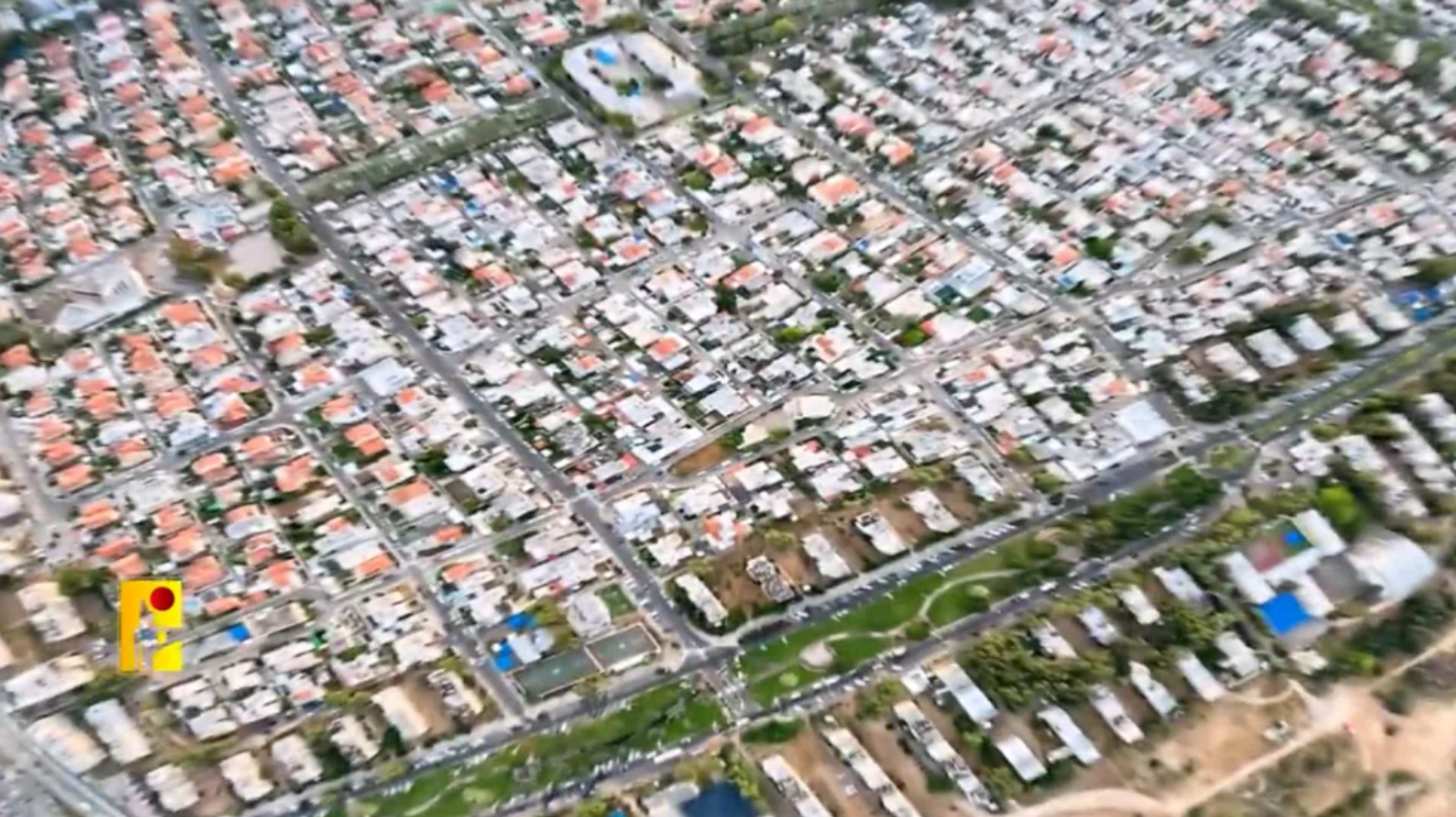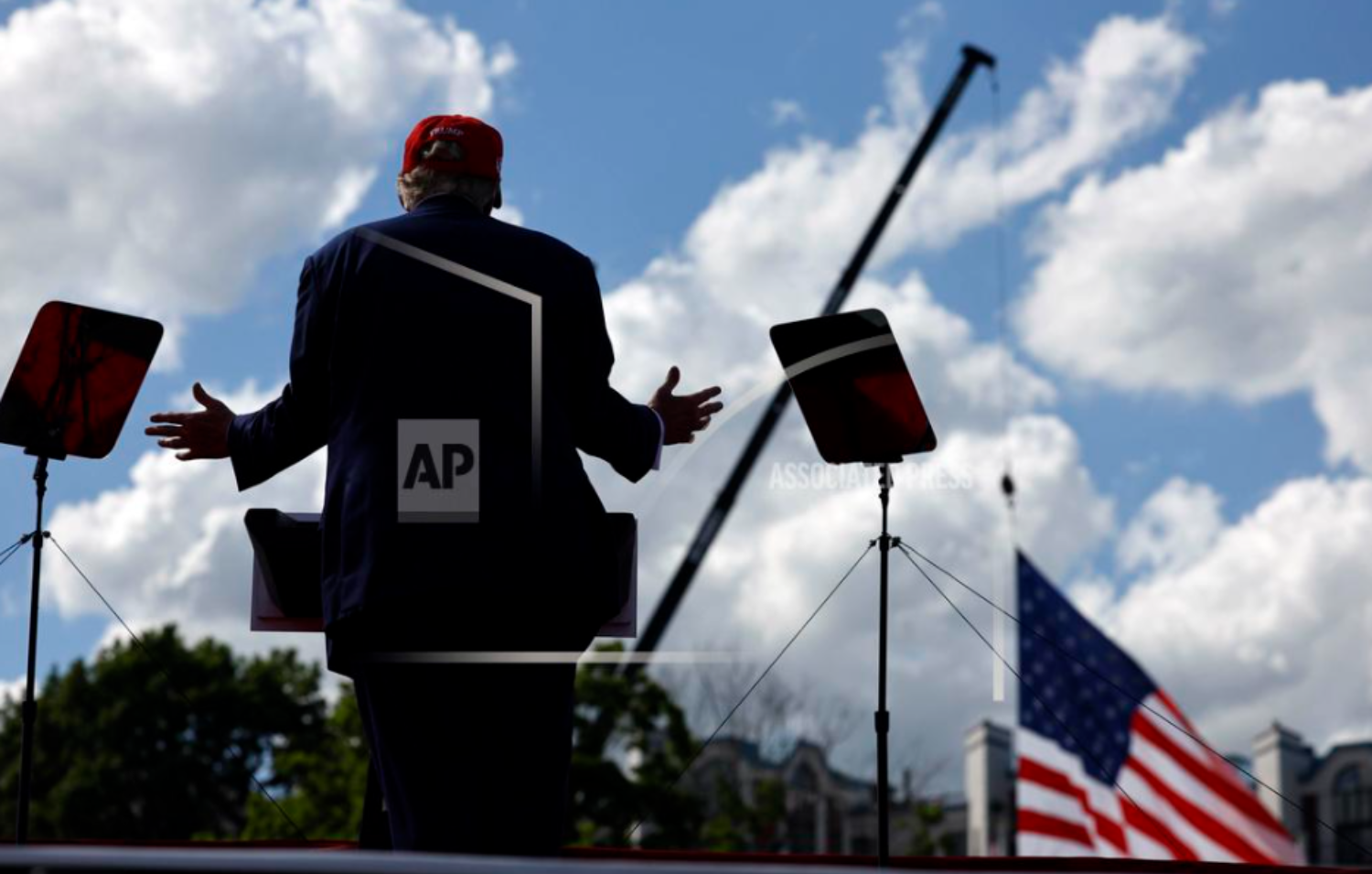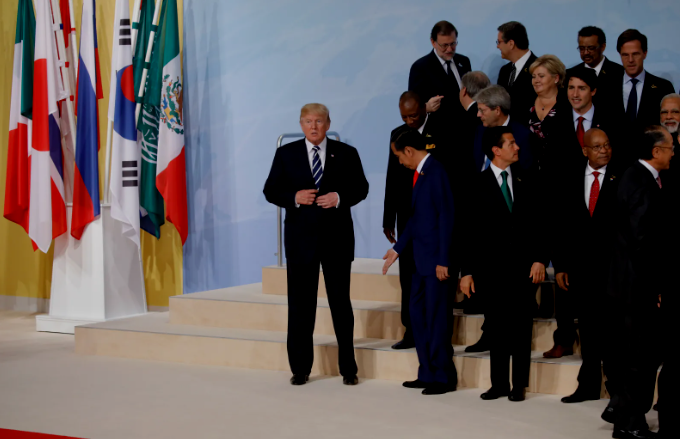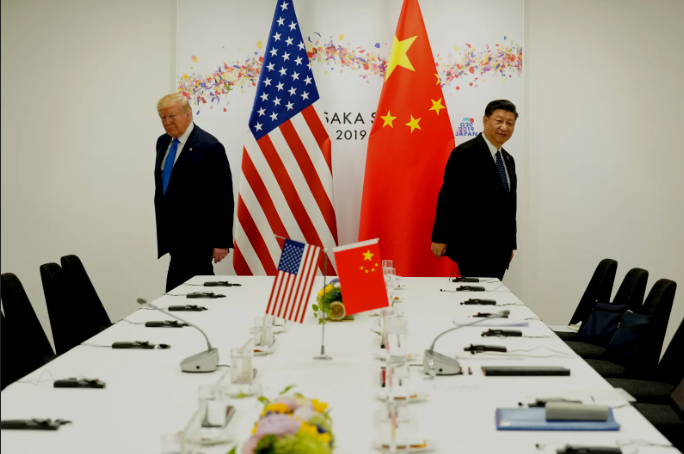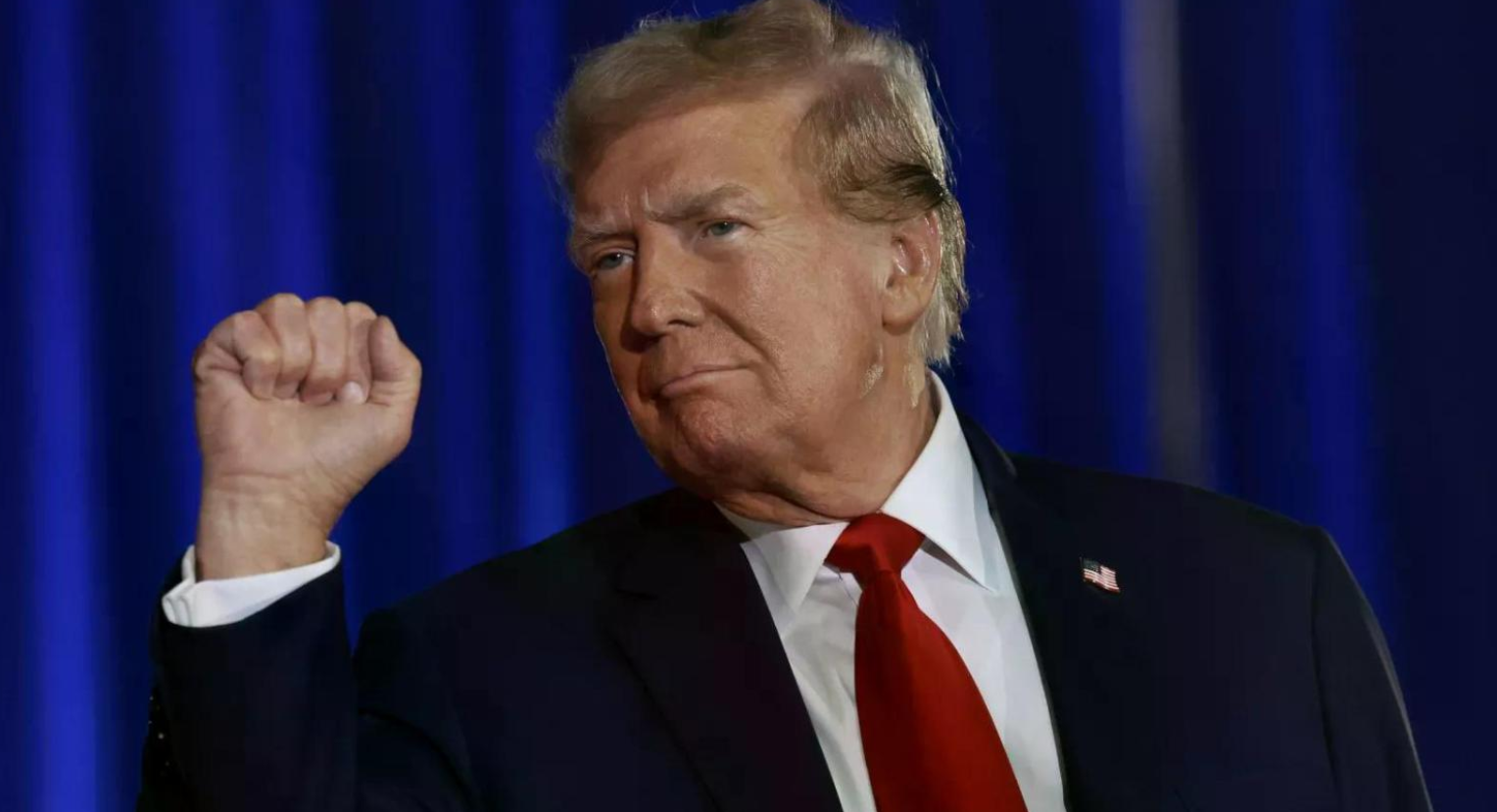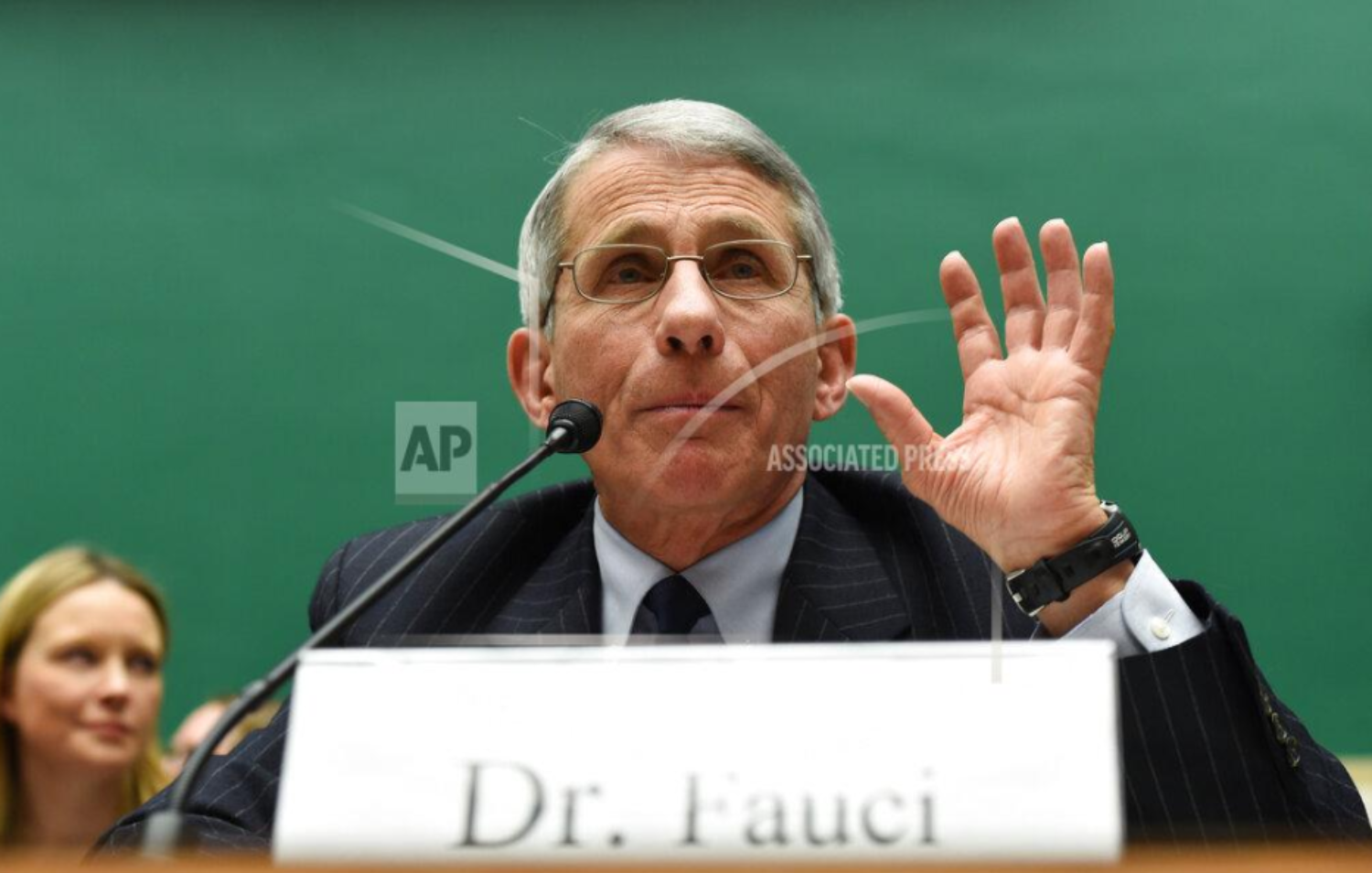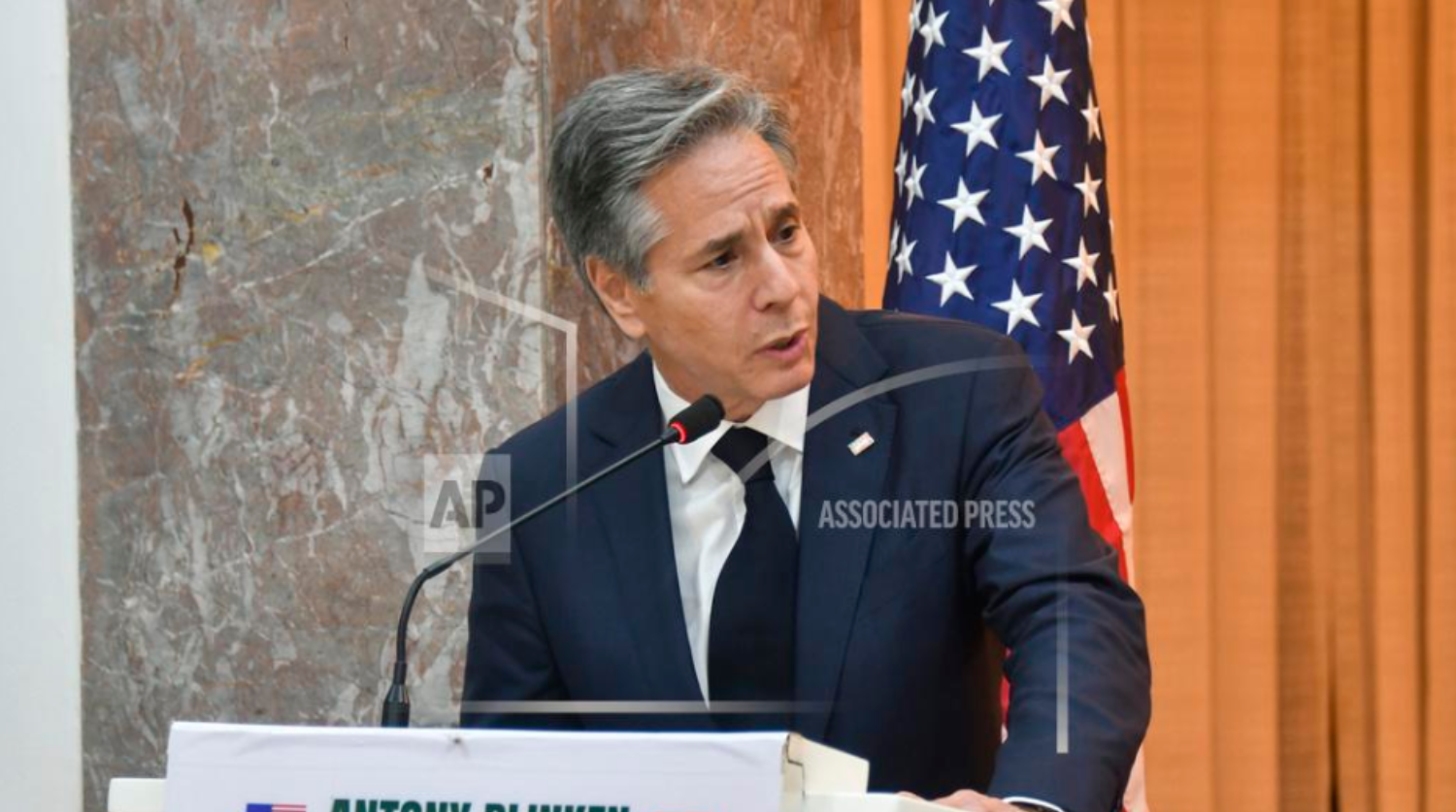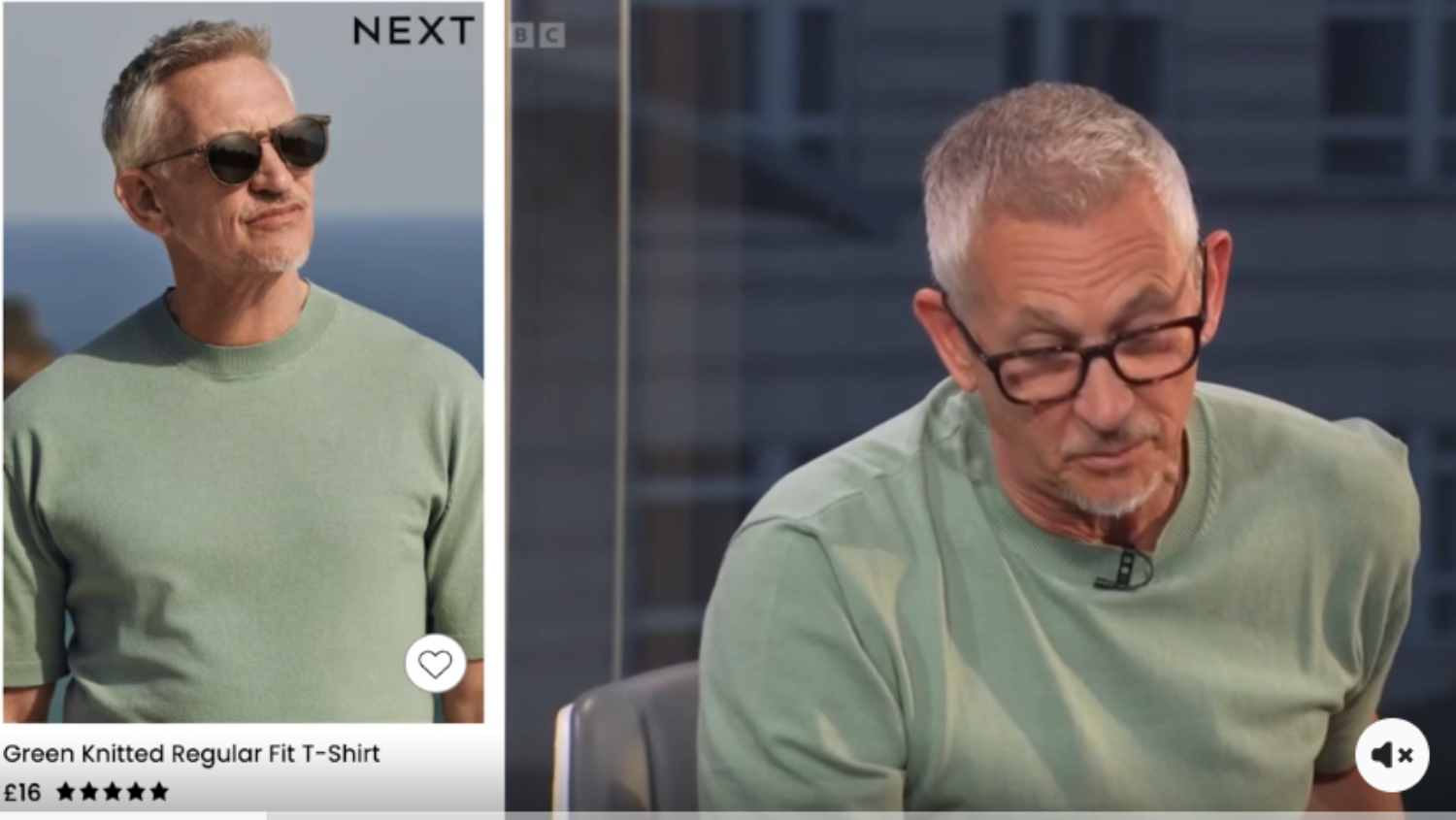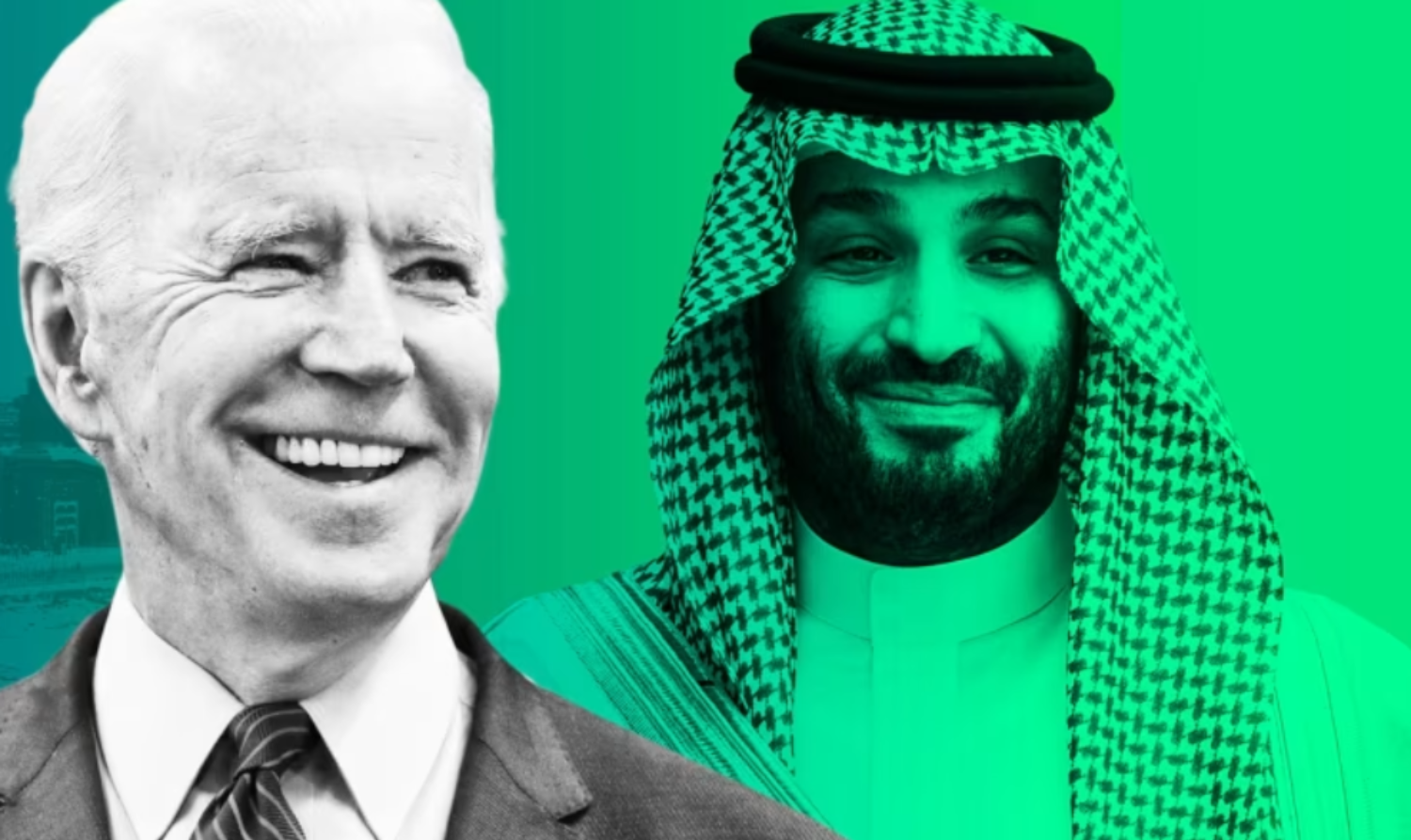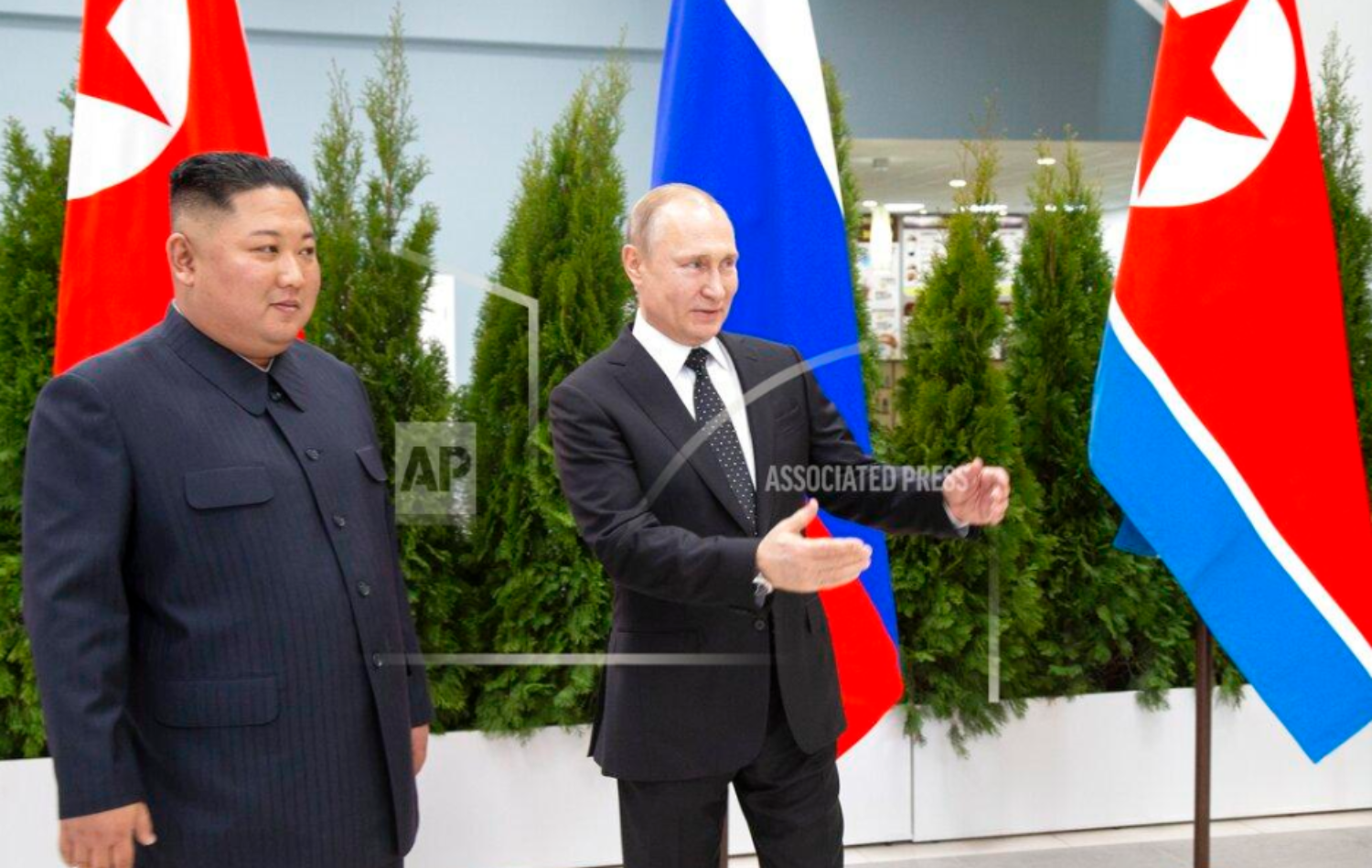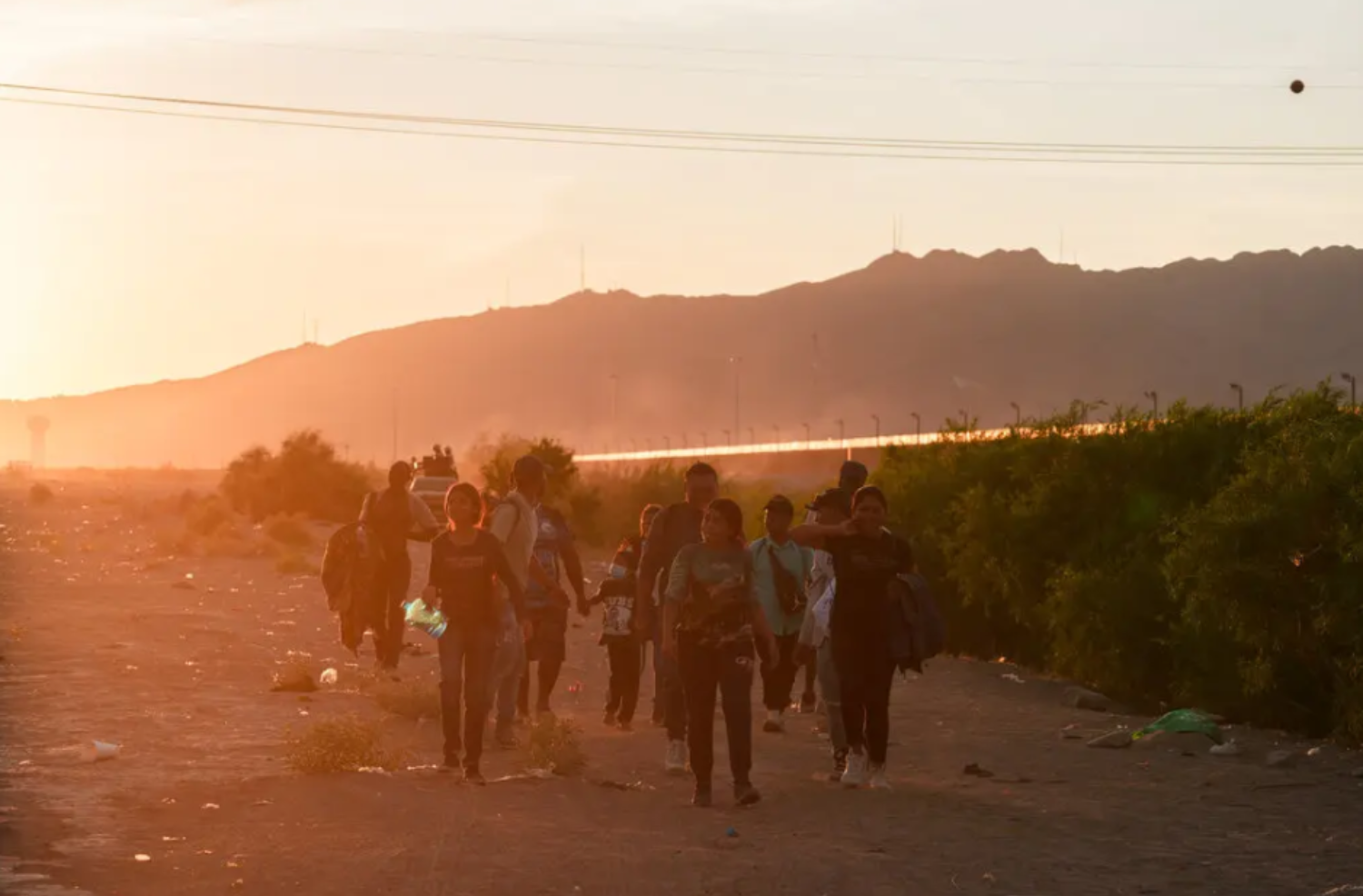-
Posts
10,072 -
Joined
-
Last visited
Content Type
Events
Forums
Downloads
Quizzes
Gallery
Blogs
Everything posted by Social Media
-
In a candid appearance on CBS’s "The Late Show" with Stephen Colbert, former chief White House medical adviser Anthony Fauci offered a stark diagnosis of the current state of the United States, likening it to a patient suffering from "a degree of schizophrenia." When prompted by Colbert to diagnose America as if it were a patient, Fauci suggested the nation needed a psychologist rather than a surgeon or an internist. Fauci elaborated, describing the extreme divisions within the country and emphasizing that while people seem drastically different, they often forget how much they have in common. Fauci, who was instrumental in the country’s COVID-19 pandemic response under both the Trump and Biden administrations, has become a polarizing figure. His encouragement for people to get vaccinated and his public health measures have made him a target for the right. Reflecting on his relationship with former President Donald Trump, Fauci revealed it was initially positive. However, tensions rose when Trump began to downplay the severity of the virus and spread misinformation. Fauci felt compelled to publicly contradict the former president, a move he knew would be uncomfortable but necessary to correct the public narrative. Fauci’s forthcoming book will delve into his experiences working with Trump and the various challenges encountered during the pandemic. He recounted the personal toll his public health advocacy has taken, including harassment and death threats directed at him and his family. Despite the backlash, Fauci maintained that his public contradictions of Trump were not intended to undermine the presidency but to rectify misinformation. He expressed a deep respect for the office of the president, acknowledging the difficult balance he had to maintain between public health messaging and political sensitivities. Fauci also lamented the increasing politicization of science, describing it as a disturbing and relatively new phenomenon. Recalling his early days as the director of the National Institute of Allergy and Infectious Disease in 1984, Fauci noted that while political ideologies were always present, the current climate of hostility and vitriol is unprecedented. This shift, he suggested, reflects a broader societal divide that mirrors the schizophrenia he perceives in the nation today. The conversation with Colbert highlighted the profound impact of the pandemic on American society and the complex interplay between science, politics, and public perception. Fauci’s reflections underscored the challenges of navigating these turbulent waters while striving to maintain public trust and promote accurate health information. As the nation continues to grapple with the aftermath of the pandemic, Fauci’s insights offer a sobering reminder of the importance of unity and the need to bridge the divides that have grown so pronounced in recent years. Credit: Hill 2024-06-20 Get our Daily Newsletter - Click HERE to subscribe
-
“Hamas should give us a map of the safe zones we can stay in, because if we knew there were hostages in the neighborhood, we would have looked for another place,” To the outside world, Ahmad Al-Jamal was a respected 73-year-old general practitioner and imam in the Gaza Strip refugee camp of Nuseirat. He was a community fixture, working mornings at a public clinic and afternoons at his small private clinic, performing procedures such as circumcisions. At the local mosque, he was known for his beautiful voice reciting the Quran. However, behind the facade of his normal life lay a dark secret: for several months, Al-Jamal's apartment was a prison for three Israeli hostages hidden there for Hamas. It was widely known in Nuseirat that the Al-Jamal family had close ties to Hamas, but few in the densely populated central Gaza area were aware of the secret held within the walls of their small, darkened apartment. According to the hostages and Israeli security forces, their captors included Al-Jamal’s son, 37-year-old Palestinian journalist Abdullah Al-Jamal. From their locked and guarded room, the hostages could hear Abdullah, his wife Fatma, a phlebotomist, and their children living their daily lives in the same apartment. This hidden captivity came to a violent end when Israeli commandos, acting on intelligence, raided the apartment, extracted the hostages, and destroyed the building with an airstrike. Local residents confirmed that Ahmad, Abdullah, and Fatma were killed in the operation. The Al-Jamal children survived the raid, according to a next-door neighbor. Just a few blocks away, another family with Hamas connections, the Abu Nar family, was holding Noa Argamani, a well-known hostage taken during the Nova festival on October 7. Her kidnapping was widely seen on video. The Abu Nar family was also killed in an Israeli operation, and their building was destroyed. Local residents mentioned that this family was less prominent in the neighborhood compared to the Al-Jamals. Surviving members of the Al-Jamal family either declined to comment or couldn’t be reached. The Israeli military’s operation in Nuseirat on June 8, aimed at rescuing the hostages, led to heavy casualties among Palestinians due to intense fighting. Israeli military sources stated that the special forces eliminated armed Hamas militants guarding the hostages but did not specify whether family members encountered were also killed. The military did not comment on the destruction of the buildings. The site where the Al-Jamal family once lived has since become a place of morbid curiosity, attracting locals eager to see where the hostages had been held. The rescue operation, marked by fierce combat and heavy airstrikes, has sparked discussions among local residents about the wisdom of Hamas holding hostages in residential areas. Some were surprised, given the difficulty of keeping secrets in the densely built neighborhood where even a cough can be heard through the concrete walls. Others expressed anger at Hamas for putting civilians in danger, with some suggesting that hostages should have been held in tunnels or returned to Israel to negotiate a ceasefire. Mustafa Muhammad, a 36-year-old who fled from Gaza City to Nuseirat with his family, criticized Hamas for endangering civilians. "Hamas should give us a map of the safe zones we can stay in, because if we knew there were hostages in the neighborhood, we would have looked for another place," he said. Muhammad and his family found themselves trapped with nowhere safe to go during the raid. While some hostages have been kept in tunnels, many have been held in apartments, likely reflecting the difficulty of moving so many captives in an active war zone. Ahmad and Abdullah Al-Jamal belonged to an extended family with several ties to Hamas. Ahmad’s brother, Abdelrahman Al-Jamal, is a Hamas lawmaker in Gaza’s legislative council. Abdullah, a freelance contributor to the Palestine Chronicle, also worked for the Hamas-run news agency Palestine Now and served as a spokesman for Gaza’s Hamas-run Ministry of Labor. He openly supported the Hamas-led attack on southern Israel on October 7, which killed nearly 1,200 people, mostly civilians. "Praise be to God…Oh God, guide us…Oh God, grant us the victory you promised," Abdullah posted on Facebook that day. The Palestine Chronicle expressed sadness over Abdullah’s death and denied his involvement in holding Israeli hostages. The Al-Jamal family was well-regarded in Nuseirat, a refugee camp that has grown into a dense urban area since its establishment after the 1948 Arab-Israeli war. Ahmad was seen frequently during the war, continuing his routine between his clinic, the mosque, and buying groceries. Abdullah, however, was rarely seen, according to neighbors. Ali Bkhit, a social-media consultant from the neighborhood, recalled Ahmad Al-Jamal’s role in his community. "Dr. Ahmad was the one who circumcised my three boys," Bkhit said. "When I dealt with him, he was a nice character; his smile never left his face." Bkhit also remembered Ahmad’s voice reciting the Quran at the local Al-Farouk Mosque, describing it as beautiful and admired by many. He was shocked to learn about the hostages, not expecting the family to be so involved in Hamas’s conflict with Israel. Israeli intelligence discovered the hostages' location in May, leading special forces to practice the rescue mission on models of the two apartment blocks for weeks. The return of the hostages to Israel was a moment of rare joy amidst a grim war that continues with the goal of destroying Hamas and rescuing the remaining hostages. The rescue operation in Nuseirat led to severe bombardment and intense ground combat, causing significant casualties. Palestinian health authorities reported 274 deaths and nearly 700 injuries, while Israeli military figures cited around 100 casualties, including militants and civilians. These numbers have not been independently verified. Rescue team leader Arnon Zamora was wounded in the operation and later died. A video released by Israel’s military showed commandos entering a room to find the three male hostages. In another building 200 yards away, Noa Argamani was also rescued. Abdullah Al-Jamal’s recent articles for the Palestine Chronicle accused Israel of massacres and genocide in Gaza. Just days before his death, he wrote about Gaza families taking in displaced people, with an article titled “My House Will Always Be Open.” The contrast between his public advocacy and the hidden reality of his involvement in holding hostages underscores the complex and tragic dimensions of the ongoing conflict in Gaza. Related Topics Israeli Forces Rescue Hostages, Held By Al Jazeera & Palestine Chronicle Journalist Exposing What Others Prefer to Hide The Dismal State of Hamas Propoganda by Media Al Jazeera journalist reportedly moonlights as Hamas commander claims IDF Credit: Wall Street Journal 2024-06-20 Get our Daily Newsletter - Click HERE to subscribe
-
Israel has issued a stark warning to Hezbollah, suggesting the prospect of an "all-out war" after the Lebanese militant group released a provocative nine-minute video. This video, purportedly shot by a drone, showcased Israeli military and civilian sites in several cities, escalating already high tensions between the two entities. Foreign Minister Israel Katz emphasized the gravity of the situation on social media, stating, “We are getting very close to the moment of deciding to change the rules of the game against Hezbollah and Lebanon. In an all-out war, Hezbollah will be destroyed, and Lebanon severely beaten.” Katz’s statement underscores Israel's growing impatience and readiness to take severe action if provoked further. The Hezbollah footage, filmed during the day, claimed to capture various locations in Krayot, a cluster of residential cities north of Haifa, as well as military and industrial sites including those belonging to Israeli weapons manufacturer Rafael, Iron Dome batteries, missile storage, radar sites, military boats, and oil storage depots in the port of Haifa. This video comes amid escalating cross-border attacks between Hezbollah and Israel following the October 7 Hamas attacks and the subsequent Israeli military campaign in Gaza. Katz highlighted the potential global repercussions of attacks on Haifa, noting the involvement of international companies from China and India in the port operations. The U.S. and its allies have long warned Hezbollah, an Iran-backed group with a formidable paramilitary force, against escalating the conflict in Israel. Despite these warnings, tensions have continued to rise. CNN’s analysis confirmed the authenticity of the footage, pinpointing sensitive locations in Haifa, including military installations and critical infrastructure like oil tanks and Haifa airport. Analysis of the footage suggested that the drone mission lasted several hours or spanned multiple days, with parts of the video being sped up for effect. Weapons expert Wim Zwijnenburg identified the drone in the footage as an Iranian-origin Qasaf-2k model, likely manufactured locally, highlighting the advanced capabilities Hezbollah might possess. The mayor of Haifa, Yona Yahav, termed the video "psychological terror" and demanded a robust protection plan for the city, criticizing IDF commanders for not visiting Haifa since the recent Hamas attack. Hezbollah has signaled that this video is just the beginning, suggesting more footage might be released. Ibrahim Mousawi, a Hezbollah lawmaker, hinted at more significant threats, referencing a phrase by Hezbollah’s Secretary-General Hassan Nasrallah from the 2006 Israel-Hezbollah war about attacking "Haifa and beyond." In response to the escalating threats, Israel’s military has increased its readiness, with validated operational plans for an offensive in Lebanon, indicating a serious preparation for potential conflict. These plans, though not indicative of an imminent war, show Israel's intent to be prepared for any scenario. Hezbollah’s actions since October 7 have included firing over 5,000 rockets, missiles, and drones at northern Israel, claiming solidarity with the Palestinian cause. Hezbollah has indicated that it will cease attacks only if Israel halts its military operations in Gaza. Israel has conducted hundreds of strikes in Lebanon and evacuated around 60,000 residents from its northern border area. Similarly, over 90,000 Lebanese have fled their homes in response to the rising hostilities. The U.S. has been actively seeking a diplomatic solution to prevent a broader regional conflict, sending special envoy Amos Hochstein to Israel and Lebanon in an effort to de-escalate tensions. Credit: CNN 2024-06-20 Get our Daily Newsletter - Click HERE to subscribe
-
Suspects alleged to have attacked victim and beat her while hurling antisemitic insults before gang-raping her in park near her home. French prosecutors have opened an investigation into three teenage boys suspected of raping a 12-year-old girl in an attack motivated by antisemitism, French media reported Tuesday. An investigation was opened on Saturday night after the girl and her parents filed a police complaint in Courbevoie, near Paris, alleging that she had been attacked in a park near her home by three teenagers, who hurled antisemitic insults at her before dragging her to a shed and gang-raping her, Le Monde reported. The three attackers, aged 12, 13 and 14 years old, beat the girl and “forcibly penetrated” her while “making death threats and antisemitic remarks,” the report said, citing an unnamed police source. in Ifs, near Caen, northwestern France, on May 14, 2024. (Lou Benoist/AFP) The three attackers, aged 12, 13 and 14 years old, beat the girl and “forcibly penetrated” her while “making death threats and antisemitic remarks,” the report said, citing an unnamed police source. Two of the three attackers were identified by the girl’s friend, who had been in the park with her at the time of the attack, and all three were arrested on Monday. According to Le Parisien, one of the suspects was the girl’s former boyfriend, who confessed to the attack and said he had acted out of revenge after she hid her religious identity from him. French media outlets reported that investigators uncovered antisemitic content on the suspect’s phone, although that was not confirmed. Following the attack, the girl was taken to a local hospital, where she underwent a gynecological examination that confirmed she had been raped. The Nanterre public prosecutor’s office confirmed to local news outlets that the teenagers were being investigated on suspicion of “aggravated rape, aggravated sexual assault, attempted extortion, invasion of privacy, death threats,” for the attack. They were also being investigated for violence and hate speech due to the antisemitic nature of the attack. One of the three suspects was placed in detention and the other two were in police custody, due to their age. They were scheduled to appear before a judge on Tuesday and prosecutors requested that they remain in detention until they are charged and tried. Antisemitism has surged in France in the wake of the October 7 Hamas terror assault in southern Israel and subsequent war in Gaza. Of the 1,676 antisemitic incidents reported in France in 2023 — up from 436 the year prior — 74 percent occurred after October 7. Credit: TOI 2024-06-20 Get our Daily Newsletter - Click HERE to subscribe
-
Labour has suspended one of its candidates, Andy Brown, who is standing in Aberdeenshire North and Moray East, after reports surfaced that he shared "pro-Russian" material online. The Press and Journal first reported that Brown also shared a post downplaying allegations of antisemitism within the Labour Party. A Labour spokesperson confirmed that Brown had been suspended pending an investigation. The suspension comes in light of a social media post Brown shared in April 2018, weeks after the Salisbury poisonings, from the Russian state media outlet RT. The article claimed that the toxin used in the Salisbury incident was "never produced in Russia, but was in service in the US, UK, and other NATO states." In a separate instance in April 2018, Brown shared a quote from a Jewish historian stating, "the real issue... is that right-wing Jews in the Labour Party and outside the party object to the fact that Jeremy Corbyn is a consistent supporter of Palestinian rights." A Scottish Labour spokesperson emphasized the party's commitment to high standards, stating, "Andy Brown has been administratively suspended from the Labour Party pending investigation. We have taken the decision to withdraw support from a parliamentary candidate during a General Election. Anas Sarwar and Keir Starmer have changed the Labour Party and said that every candidate and MP would operate to the highest standards. This action shows that they meant it." Due to the timing of the suspension, after the political nominations deadline, Brown's name will still appear next to the Labour logo on the ballot paper for the election on July 4th. However, if elected, he will stand as an independent. In the Aberdeenshire North and Moray East constituency, the Scottish Conservative leader Douglas Ross and SNP's Seamus Logan are also running as candidates. Credit: BBC 2024-06-20 Get our Daily Newsletter - Click HERE to subscribe
-
At least 550 pilgrims have died during this year's Hajj pilgrimage in Mecca, highlighting the severe challenges posed by extreme heat. The temperatures during the pilgrimage soared past 50°C, leading to a significant number of heat-related deaths and illnesses. Among the deceased, 323 were Egyptians, most of whom succumbed to heat-related illnesses, according to two Arab diplomats coordinating their countries' responses. "All of them [the Egyptians] died because of heat," except for one individual who sustained fatal injuries during a minor crowd crush, one diplomat stated, noting that the figures were sourced from the hospital morgue in the Al-Muaisem neighborhood of Mecca. In addition to the Egyptians, at least 60 Jordanians have died, an increase from an earlier official tally of 41 provided by Amman. The overall death toll reported by multiple countries now stands at 577, based on an AFP tally. The diplomats noted that the total count at the Al-Muaisem morgue was 550. Egypt’s foreign ministry reported collaborating with Saudi authorities to locate Egyptians who had gone missing during the Hajj. While the ministry acknowledged a certain number of deaths, it did not specify if Egyptians were among them. Saudi authorities have treated more than 2,000 pilgrims for heat stress, although they have not updated this figure since Sunday and have not provided details on fatalities. Last year, 240 pilgrims were reported dead, most of them Indonesians. The Hajj, one of the five pillars of Islam, must be completed at least once by all Muslims with the means to do so. The pilgrimage has increasingly been affected by climate change. A Saudi study published last month indicated that temperatures in the areas where Hajj rituals are performed have been rising by 0.4°C (0.72°F) each decade. On Monday, temperatures at the Grand Mosque in Mecca reached 51.8°C, according to the Saudi national meteorology center. AFP journalists in Mina, near Mecca, observed pilgrims pouring bottles of water over their heads as volunteers distributed cold drinks and quickly melting chocolate ice cream to help them stay cool. Saudi officials had advised pilgrims to use umbrellas, drink plenty of water, and avoid sun exposure during the hottest parts of the day. However, many Hajj rituals, including the prayers on Mount Arafat, require being outdoors for extended periods during the daytime. Some pilgrims reported seeing motionless bodies on the roadside and described overwhelmed ambulance services. Approximately 1.8 million pilgrims participated in this year's Hajj, with 1.6 million coming from abroad, according to Saudi authorities. Each year, tens of thousands of pilgrims attempt to perform the Hajj without securing official visas to save money. These unregistered pilgrims face greater risks as they lack access to air-conditioned facilities provided by Saudi authorities. One diplomat noted that the Egyptian death toll was likely increased by a large number of unregistered Egyptian pilgrims. Earlier this month, Saudi officials removed hundreds of thousands of unregistered pilgrims from Mecca before the Hajj began. Other countries, including Indonesia, Iran, and Senegal, have also reported deaths during this year's pilgrimage. However, most countries have not specified how many deaths were due to heat. Hosting the Hajj is a significant source of prestige for the Saudi royal family, with King Salman holding the title "Custodian of the Two Holy Mosques" in Mecca and Medina. Saudi Health Minister Fahd bin Abdul Rahman Al-Jalajel stated on Tuesday that health plans for the Hajj had been successfully implemented, preventing major disease outbreaks and other public health threats, according to the official Saudi Press Agency (SPA). A virtual hospital provided over 5,800 virtual consultations to pilgrims, primarily for heat-related illnesses, enabling prompt intervention and mitigating the potential for a surge in cases, the SPA reported. Credit: The Guardian 2024-06-20 Get our Daily Newsletter - Click HERE to subscribe
-
The Texas pastor had been on Trump's "spiritual advisory committee." Pastor Robert Morris, a prominent figure in the evangelical community and the senior pastor of Gateway Church in Southlake, Texas, has resigned following a grave admission of child sex abuse. Morris's resignation came three days after he confessed to engaging in "sexual behavior" with a child during the 1980s. The board of elders at Gateway Church announced Morris’s resignation on Tuesday in a statement to NBC News. They revealed that Morris had admitted to the inappropriate sexual behavior with a young girl, a revelation that has shocked the church community and beyond. "The elders’ prior understanding was that Morris’s extramarital relationship, which he had discussed many times throughout his ministry, was with 'a young lady' and not abuse of a 12-year-old child," the church leaders stated. They emphasized that they were unaware of the victim's age or the prolonged nature of the abuse until recently. "Even though it occurred many years before Gateway was established, as leaders of the church, we regret that we did not have the information that we now have." To ensure a thorough understanding of the allegations, Gateway Church has enlisted the law firm Haynes & Boone to conduct an independent review. This step aims to provide a complete and transparent account of the events surrounding the abuse allegations. Morris, who previously served on President Donald Trump’s spiritual advisory committee, has long spoken to his congregation about a "moral failure" involving sexual sin during his early years as a minister. However, the full extent of his actions was not known until now. Cindy Clemishire, now 54, disclosed in a post on the church watchdog site The Wartburg Watch that she was 12 when Morris first sexually abused her in 1982. According to Clemishire, the abuse continued for more than four years. She told NBC News on Monday that the abuse began when she was a child, casting a new and disturbing light on Morris's past confessions of moral failure. In response to Clemishire's allegations, Gateway Church and Morris issued statements on Friday and Saturday acknowledging that Morris had engaged in "sexual behavior with a young lady." They claimed the "sin was dealt with correctly by confession and repentance," but this response has not satisfied all parties involved. Clemishire expressed mixed feelings about Morris's resignation in a statement released on Tuesday. "Though I am grateful that he is no longer a pastor at Gateway, I am disappointed that the Board of Elders allowed him to resign," she said. "He should have been terminated." Clemishire added that she had repeatedly disclosed the abuse to church leaders and pastors, including those at Gateway, but it was only after she spoke out publicly that any action was taken. The revelation has not only rocked Gateway Church but has also prompted broader discussions about accountability and transparency within religious institutions. The independent review by Haynes & Boone is expected to shed more light on the extent of the abuse and the church's handling of the situation. Credit: NBC 2024-06-20 Get our Daily Newsletter - Click HERE to subscribe
-
Robert Redfield, former Director of the Centers for Disease Control and Prevention (CDC), has issued a stark warning about the likelihood of a bird flu pandemic. According to Redfield, the question is not if, but when this pandemic will occur. His alarming prediction comes amidst the backdrop of avian influenza, commonly known as bird flu, wreaking havoc on bird populations globally. Over the past two years, bird flu has decimated millions of wild and domestic birds worldwide, yet human cases have remained relatively rare. Redfield, however, is convinced that this will change. In an interview with NewsNation's Brian Entin, he stated, "I really do think it’s very likely that we will, at some time, it’s not a question of if, it’s more of a question of when we will have a bird flu pandemic." He emphasized the potential severity of such an outbreak, noting that bird flu could have a significant mortality rate in humans, potentially between 25% and 50%, compared to COVID-19’s death rate of 0.6%. Bird flu, an infection caused by influenza viruses that typically spread in birds and other animals, can infect humans who come into contact with an infected animal’s body fluids, such as spit, respiratory droplets, or feces. It can also spread if a person inhales dust particles in animal habitats or comes into contact with the fluids through the eyes, nose, or mouth. People working with poultry, waterfowl, and livestock are particularly vulnerable. The Cleveland Clinic describes avian influenza as an infection primarily affecting birds, with human cases being extremely rare. However, Redfield, drawing on his extensive experience and research, outlined the conditions necessary for the virus to spread between humans. He explained that for bird flu to become transmissible among humans, five specific amino acids in the virus’s key receptor must mutate to allow it to bind to human receptors. Once this occurs, human-to-human transmission would become possible, potentially triggering a pandemic. Redfield’s concern is heightened by recent developments. The virus has been detected in dozens of cattle across the United States, and the World Health Organization reported the first human death from bird flu in Mexico. He highlighted that while it remains unclear how long it will take for the necessary mutations to occur, the presence of the virus in cattle herds is troubling. Research by Jenna Guthmiller, an assistant professor of immunology and microbiology at the University of Colorado School of Medicine, sheds light on how bird flu might have spread to cattle. Guthmiller suggested that milking machines could be carrying the virus, as high levels have been found in the cows’ udders. This unusual outbreak in cattle, which are not natural hosts for influenza A viruses, has shocked the scientific community. Despite these alarming signs, the CDC maintains that the general public’s current risk of contracting bird flu remains low. However, the agency is taking precautions, such as tracking wastewater treatment sites to monitor the virus’s presence. Nirav Shah, the CDC’s principal deputy director, noted that while the virus has not yet shown signs of spreading from person to person, the risk increases if infected individuals exhibit respiratory symptoms. Shah explained, “Simply put, someone who’s coughing may be more likely to transmit the virus than someone who has an eye infection like conjunctivitis.” There have been three confirmed human cases of bird flu this year, all involving farmworkers directly exposed to infected dairy cattle. The first two cases in Texas and Michigan reported mild symptoms, including eye inflammation, while the third case in Michigan exhibited upper respiratory problems, sore throat, cough, and congestion. The CDC is monitoring 350 people exposed to infected dairy cows and has tested 39 individuals for the virus. As the situation develops, the CDC stresses that bird flu remains primarily an animal health issue but is preparing for the possibility of a greater human health risk. The agency outlined symptoms of bird flu in humans, which range from mild flu-like symptoms to severe respiratory issues and even neurological problems. In rare cases, symptoms can include diarrhea, nausea, vomiting, or seizures. To combat a potential outbreak, researchers are developing new vaccines. Traditional influenza vaccines are made using fertilized eggs, which poses risks if wild birds carrying the virus contaminate vaccine production. However, a new experimental mRNA vaccine, developed by the University of Pennsylvania’s School of Medicine, could offer a solution. Unlike conventional vaccines, mRNA vaccines do not require eggs and could be more effective in managing outbreaks of the H5N1 virus in birds and cattle, as well as preventing human infections. In conclusion, while the general public’s immediate risk remains low, the potential for a bird flu pandemic looms on the horizon. Former CDC Director Robert Redfield’s warnings underscore the need for vigilance and preparedness as scientists and health officials work to mitigate the threat of this deadly virus. Related Topics: Travellers Urged to Monitor for Bird Flu Symptoms After Trips Abroad U.S. to Invest Millions in mRNA Bird Flu Vaccine Amid H5N1 Threat Bird Flu in Cattle Should You Be Concerned? First Human Case of Bird Flu Reported in Australia Amid New Farm Outbreak Credit: Hill 2024-06-20 Get our Daily Newsletter - Click HERE to subscribe
-
The Return of Peace Through Strength The ancient Latin phrase "si vis pacem, para bellum," meaning "If you want peace, prepare for war," encapsulates a concept that has influenced leaders from the Roman Emperor Hadrian to modern U.S. Presidents. This idea of achieving peace through strength—or the threat of strength—was echoed by George Washington, who told Congress in 1793 that securing peace required being perpetually ready for war. Theodore Roosevelt’s famous dictum, “Speak softly, and carry a big stick,” similarly reflects this principle, as did Ronald Reagan’s promise to achieve “peace through strength,” which he fulfilled during his presidency. In 2017, President Donald Trump resurrected this ethos in the White House, marking a departure from the preceding Obama administration, which Trump criticized for weakening U.S. military power and apologizing for American foreign policy. Trump asserted this renewed stance at the UN General Assembly in September 2020, declaring that the United States was fulfilling its destiny as a peacemaker through strength. Contrary to the often negative portrayals of Trump, his administration’s record shows significant peacemaking achievements. Within the final 16 months of his term, the U.S. facilitated the Abraham Accords, fostering peace between Israel and three neighboring countries plus Sudan, brokered economic normalization between Serbia and Kosovo, and helped resolve the rift between Egypt and key Gulf states with Qatar. Additionally, the U.S. agreement with the Taliban prevented American combat deaths in Afghanistan for nearly a year. Trump’s presidency was marked by a determination to avoid new wars and protracted counterinsurgency operations, making it the first since Jimmy Carter’s term without the U.S. entering new conflicts or expanding existing ones. Under Trump, the U.S. also claimed victory over the Islamic State (ISIS), eliminating its leader Abu Bakr al-Baghdadi and dismantling it as a military force. Despite these successes, Trump’s tenure saw adversaries exercising caution rather than aggression. Russia refrained from further incursions following its 2014 invasion of Ukraine, Iran did not directly attack Israel, and North Korea ceased nuclear weapon testing after diplomatic efforts combined with a show of U.S. military strength. While China maintained an aggressive stance, Trump’s decisive actions, such as the 2017 airstrike on Syria following Assad’s use of chemical weapons, underscored his commitment to enforcing red lines. Today, the call for a restoration of Trump’s peace-through-strength policy is more urgent than ever, especially in the face of China’s rising challenge. President Biden’s administration has sent mixed signals about the threat posed by Beijing, retaining Trump-era tariffs and export controls but also attempting to revive pre-Trump cooperation with China. This approach has been criticized as more performative than substantive, with high-level visits to Beijing delivering firm warnings alongside promises of restored cooperation. Such mixed messages risk undermining U.S. strategic clarity. China’s ambitions to surpass the U.S. in technological and economic domains through state subsidies, intellectual property theft, and unfair trade practices necessitate a robust American response. Trump began a de facto policy of economic decoupling by imposing tariffs on Chinese exports, a strategy that needs intensification. A proposed 60 percent tariff on Chinese goods and stricter export controls on technology beneficial to China’s military would further this agenda. While maintaining open communication lines with Beijing, the U.S. should prioritize strengthening alliances in the Pacific with nations like Australia, Japan, the Philippines, and South Korea, and fostering emerging partnerships with Indonesia and Vietnam. Contrary to concerns, regional officials have welcomed Trump’s forthright discussions about mutual defense responsibilities, viewing his approach as enhancing regional security. Joint military exercises and strategic deployments, such as the disinvitation of China from the annual Rim of the Pacific war games in 2018, exemplify this strategy. Enhancing Taiwan’s defense spending and capabilities is crucial. Despite Taiwan’s considerable defense budget, increased investment and clarity in U.S. arms supply and defense commitments are necessary. Congressional support for military grants, loans, and weapons transfers to nations like Indonesia, the Philippines, and Vietnam would bolster their defenses against Chinese aggression. Moreover, the U.S. Navy should reposition its resources, including moving an aircraft carrier to the Pacific and deploying the entire Marine Corps to the region, prioritizing missile defenses and fighter jet protection at Pacific bases. This strategic reallocation from other global missions would address current deficiencies and reinforce U.S. military presence in the Pacific. In summary, the principle of peace through strength remains a vital framework for U.S. foreign policy. Trump’s approach demonstrated the effectiveness of this strategy, achieving significant peacemaking successes and maintaining deterrence against adversaries. As the U.S. navigates ongoing geopolitical challenges, particularly with China, a renewed commitment to this policy could ensure continued peace and stability. Credit: Foreign Affairs 2024-06-20 Get our Daily Newsletter - Click HERE to subscribe
-

Israel is at War - General discussion (pt3)
Social Media replied to Social Media's topic in The War in Israel
New topic: Exposing What Others Prefer to Hide The Dismal State of Hamas Propoganda by Media https://aseannow.com/topic/1330043-exposing-what-others-prefer-to-hide-the-dismal-state-of-hamas-propoganda-by-media/ -
A Philippine sailor has sustained severe injuries after Chinese forces obstructed an Armed Forces of the Philippines resupply mission in the South China Sea. This mission aimed to deliver supplies to the BRP Sierra Madre (LT-57) outpost at Second Thomas Shoal. The incident also caused damage to several Philippine vessels, as confirmed by Pentagon officials to USNI News. The sailor was injured due to what has been described as the “PRC vessels’ dangerous and deliberate use of water cannons, ramming, and blocking maneuvers,” according to a statement from U.S. Army Maj Pete Nguyen, a spokesperson for the Office of the Secretary of Defense. This incident marks the third time Philippine personnel have been injured during resupply missions to the Marine outpost at Second Thomas Shoal, an area frequently contested by China and the Philippines. The South China Sea, particularly Second Thomas Shoal, has been a hotspot for numerous confrontations between China and the Philippines, with recent incidents escalating in severity. Earlier instances of such conflicts have resulted in injuries to Philippine sailors, with the first reported case occurring in March, where four sailors were hurt. Although the Pentagon did not specify which Philippine vessels were involved, Ray Powell, director of the SeaLight Project at Stanford University's Gordian Knot Center for National Security Innovation, observed the Philippine Coast Guard vessel BRP Bacagay (MRRV-4110) operating near Second Thomas Shoal. The vessel was reportedly surrounded by Chinese ships at the time of the incident. Despite the Pentagon’s referral of further inquiries to the Philippine government, Manila has not released any images or a detailed timeline of events, a departure from their usual practice of promptly sharing visual evidence following Chinese blockades. Jay Tarriela, spokesperson for the National Task Force for the West Philippine Sea, refrained from commenting on the incident, citing it as an Armed Forces of the Philippines operation. Tarriela has previously been swift in issuing statements regarding Chinese blockades. Chinese state media was the first to report the incident, justifying the actions of the China Coast Guard as lawful “control measures” against the Philippine vessels. According to the Chinese report, the Philippine resupply vessel violated International Regulations for Preventing Collisions at Sea, placing the blame for the collision entirely on the Philippines. “The responsibility for the incident lies entirely with the Philippine side,” the China Coast Guard asserted in their release. Conversely, a statement from the National Task Force on the West Philippine Sea accused ships from the People’s Liberation Army Navy, China Coast Guard, and Chinese Maritime Militia of performing “dangerous maneuvers.” However, this statement did not mention any injuries to Philippine personnel. It also claimed that Chinese forces rammed and towed Philippine vessels, though the extent of these actions remains unclear. This is reportedly the first instance of China towing Philippine vessels in their South China Sea disputes, an action defined as pulling, pushing, or hauling. The Pentagon has expressed strong support for the Philippines, condemning China’s actions. “We stand with our Philippine allies and condemn the escalatory and irresponsible actions by the PRC to deny the Philippines from executing a lawful maritime operation in the South China Sea,” reads the Pentagon statement. The U.S. and the Philippines have a mutual defense pact that could be invoked if Chinese forces attack Philippine military or coast guard personnel. This was reiterated by a March U.S. State Department statement, affirming that the 1951 U.S.-Philippines Mutual Defense Treaty covers armed attacks on Philippine armed forces, public vessels, or aircraft in the South China Sea. Philippine President Ferdinand Marcos has previously warned that the death of any Filipino in South China Sea operations would cross a significant threshold. “If a Filipino citizen was killed by a willful act, that is very close to what we define as an act of war,” Marcos stated in May during the Shangri-La Dialogue. “We would have crossed the Rubicon. Is that a red line? Almost certainly.” The ongoing confrontations in the South China Sea highlight the volatile nature of the region and the complexities of the geopolitical landscape. The latest incident underscores the escalating risks and the potential for conflict between the involved nations, with significant implications for regional security and international relations. This incident is not just a clash of vessels at sea but a manifestation of the broader geopolitical struggle between China and its neighbors, backed by their respective allies. The South China Sea is a critical waterway, rich in resources and strategic importance, making it a focal point of territorial disputes. The Philippines, backed by the United States, has been asserting its claims against China’s expansive territorial assertions, which include building and militarizing artificial islands. The international community watches closely as these incidents unfold, understanding that the South China Sea’s stability affects global trade routes and regional security dynamics. The aggressive maneuvers by Chinese vessels and the resulting injuries to Philippine sailors have further strained relations and could potentially lead to more significant confrontations if not addressed through diplomatic channels. The United States has reiterated its commitment to the defense of the Philippines, emphasizing that any attack on Philippine forces would trigger mutual defense obligations under existing treaties. This commitment underscores the strategic importance of the Philippines to U.S. interests in the region and serves as a warning to China about the potential consequences of its actions. The situation remains tense, with the possibility of further incidents as both nations continue to assert their claims in the contested waters. The international community, particularly ASEAN and other regional stakeholders, may need to intervene to de-escalate tensions and promote a peaceful resolution to the disputes. The South China Sea’s future remains uncertain, with each incident bringing the region closer to a potential flashpoint. UPDATE: U.S. Condemns China Over Aggressive Actions in South China Sea Incident The United States has strongly condemned China following a collision between a Chinese vessel and a Philippine supply ship in the disputed South China Sea. This incident, which occurred near Second Thomas Shoal in the Spratly Islands, is the latest in a series of confrontations that have heightened tensions and raised the risk of a larger conflict in this strategically important waterway. The collision took place early Monday, according to statements from both nations, each blaming the other for the incident. The United States has voiced its support for the Philippines, condemning China's actions as "aggressive" and "dangerous." MaryKay Carlson, the U.S. ambassador to Manila, took to social media platform X to criticize China's maneuvers, which she said "caused bodily injury" and "damaged Philippine vessels." Credit: US Naval Institute | CNN 2024-06-19 Get our Daily Newsletter - Click HERE to subscribe
-
In a forceful critique, NATO Secretary General Jens Stoltenberg condemned China on Monday for its duplicity in publicly supporting Ukraine while secretly aiding Russia with military supplies. Speaking at the Wilson Center in Washington, DC, Stoltenberg accused China of exacerbating the most significant conflict in Europe since World War II, stating, “China is fueling the largest armed conflict in Europe since World War II. At the same time, it wants to maintain good relations with the West. Well, Beijing cannot have it both ways.” Since Russia's invasion of Ukraine began in February 2022, China has maintained a publicly neutral stance, advocating for peace and claiming to uphold a strategic partnership with Ukraine. On June 3, Chinese Foreign Ministry Spokesperson Mao Ning reiterated Beijing’s commitment to Ukraine, highlighting that China remains Ukraine’s largest trading partner and maintains normal embassy operations in Kyiv. “Since the full escalation of the Ukraine crisis, China has maintained communication and cooperation with Ukraine,” Mao Ning stated. Despite these public declarations, China has simultaneously solidified its position as Russia’s largest trading partner, especially significant as many countries have imposed sanctions on Russia. While Beijing insists it has not supplied Russia with weapons for use in Ukraine, US officials argue that this claim is misleading. Stoltenberg pointed out that China has been providing Russia with critical technological components essential for its war efforts, including materials for producing missiles, tanks, and aircraft. “Beijing is sharing high-end technologies, like semiconductors or dual-use items. Last year, Russia imported 90% of its microelectronics from China,” Stoltenberg noted. The NATO chief emphasized that these contributions have significantly bolstered Russia’s defense capabilities, enabling continued aggression in Ukraine and undermining the impact of international sanctions. “All of this enables much death and destruction on Ukraine, bolsters Russia’s defense industrial base, and evades the impact of sanctions and export controls,” he asserted. In response to these actions, the US recently sanctioned seven Chinese companies for shipping materials to Russia that could be used in weapons systems. This move underscores the US position that security threats from Russia and China are intertwined. Stoltenberg dismissed the notion that threats in Europe posed by Russia and those in the Asia-Pacific posed by China could be separated. “Our security is global, not regional, and that’s very clearly demonstrated in Ukraine,” he said. China has often invoked respect for territorial integrity in its international rhetoric, a principle it uses to justify its claims in the South China Sea and over Taiwan. However, this stance has not extended to urging Russia to return Crimea to Ukraine or the Donbas region to Kyiv. Instead, China has taken steps perceived as pro-Moscow, such as proposing a controversial peace plan last year that was criticized for being heavily skewed in favor of Russian demands. The US dismissed the plan, with National Security Council spokesman John Kirby describing it as potentially “one-sided and reflect only the Russian perspective.” Recently, China declined an invitation to a peace summit in Lucerne, Switzerland, attended by representatives from over 100 nations and international organizations. Beijing’s refusal was reportedly due to Moscow's absence from the meeting. Chinese Foreign Ministry Spokesperson Mao Ning explained, “China has repeatedly stressed that the international peace conference needs to meet the three important elements – namely, recognition from both Russia and Ukraine, equal participation of all parties, and fair discussion of all peace plans. As far as China is concerned, the meeting does not yet seem to meet these three elements, and that is exactly why China would not be able to take part in the meeting.” Ukrainian President Volodymyr Zelensky, addressing the summit, expressed hope that Russia and, by extension, China, would participate in future iterations of the event. The absence of China at such peace initiatives underscores the complex and often contradictory role Beijing plays in the ongoing conflict, as it attempts to balance its international relationships while supporting its strategic ally, Russia. Stoltenberg's critique highlights the growing frustration within NATO and Western nations over China’s actions, which, despite its claims of neutrality and peace advocacy, have significantly contributed to the prolongation and escalation of the conflict in Ukraine. The situation exemplifies the broader geopolitical struggle and the intricate web of alliances and enmities that define current international relations. Credit: NYP 2024-06-19 Get our Daily Newsletter - Click HERE to subscribe
-
Former President Donald Trump has taken a slight lead over President Joe Biden in the latest presidential election forecast by 538. As the presumptive Republican nominee gears up for a rematch with Biden, the race is proving to be much tighter than many anticipated, with the two candidates frequently appearing neck and neck in various polls. The recent projection by 538 indicates Trump winning 51 times out of 100 simulations, while Biden wins 49 times out of 100. This marks a notable change from the project's launch in April, where Biden had a more comfortable lead, being projected to win 58 times out of 100 compared to Trump’s 41 times out of 100. This lead persisted until last week when Biden's projected victories dropped to 53 times out of 100 against Trump's 47. The slim margin highlights the volatility and competitiveness of the upcoming election. The 538 simulation forecast considers a multitude of factors to predict likely election outcomes. These include adjusted polling averages, economic and political indicators, and demographic data. Such forecasts are significant as they provide a glimpse into the potential direction of the election, though they are not definitive predictions. The real outcome will hinge on a few key swing states, given the Electoral College system's weight. A candidate must secure 270 electoral votes to win, meaning national popular vote results do not necessarily guarantee a win. Despite Trump’s current edge in the 538 projection, other polls suggest a different story. For instance, an Echelon Insights poll conducted between June 10 and June 12 found Biden slightly ahead, with 48 percent of respondents indicating they would vote for him compared to 47 percent for Trump. Furthermore, Biden and Trump are currently tied in Virginia, a state that has not supported a Republican presidential candidate since George W. Bush in 2004. Experts caution against drawing definitive conclusions from these early projections. Heath Brown, an associate professor of public policy at the City University of New York, emphasizes the split nature of the polling. "I think all the polling for the last six months suggests the country has been and will remain evenly split," he told Newsweek. "Slight ups and downs for either candidate in any given poll are largely washed out by the next set of polls. My conclusion is Biden and Trump have just about equal support right now, with a sizable portion of the country undecided about who they support and whether they'll turn out on Election Day." The significance of these forecasts lies in their ability to influence campaign strategies and voter perceptions. As both candidates prepare for the first of two scheduled debates in Atlanta on June 27, the focus will be on how they perform and whether they can sway the undecided voters. The debates will provide a crucial platform for both Trump and Biden to present their visions for the country and address critical issues facing the electorate. 538’s daily updates on its forecast simulator will continue to reflect the latest data and trends, offering an evolving picture of the race. As the November 5 election day approaches, both campaigns will be keenly watching these forecasts, adjusting their strategies to gain an edge in what promises to be one of the most closely contested elections in recent history. The unpredictable nature of the political climate, compounded by external factors such as economic conditions and international events, ensures that the race will remain dynamic and uncertain up until the final votes are cast. Credit: Newsweek 2024-06-19 Get our Daily Newsletter - Click HERE to subscribe
-
In a forthcoming autobiography, former chief White House medical adviser Anthony Fauci divulges a contentious phone call with former President Donald Trump during the initial stages of the COVID-19 pandemic. The book, titled "On Call: A Doctor’s Journey in Public Service," reveals Trump's frustration, marked by expletives, directed at Fauci three months into the pandemic. According to reports from The New York Times and The Daily Beast, Fauci recounts a series of expletive-laden rants from Trump during a phone call in 2020. Trump reportedly berated Fauci, dropping numerous f-bombs and accusing him of exacerbating the nation's troubles. "The president was irate, saying that I could not keep doing this to him," Fauci wrote, according to the Times. Fauci described the call as highly charged, with Trump expressing his frustration over the economic implications of Fauci's public health advisories. "He said he loved me, but the country was in trouble, and I was making it worse," Fauci recounted. Trump allegedly added that the stock market's modest rise of 600 points in response to positive Phase 1 vaccine news was insufficient, blaming Fauci for costing the country a trillion dollars. The memoir details that Trump punctuated his complaint with an expletive. The chapter discussing Trump's actions during the early days of the pandemic is aptly titled, “He Loves Me, He Loves Me Not.” Fauci reflects on the challenges of working under such intense scrutiny and pressure, stating, "I have a pretty thick skin, but getting yelled at by the president of the United States, no matter how much he tells you that he loves you, is not fun." Fauci's memoir, encompassing 480 pages, dedicates approximately 70 pages to the first year of the COVID-19 pandemic, a period marked by frequent clashes with the Trump administration. The book, scheduled for release on Tuesday, chronicles Fauci's extensive career, including his tenure as director of the National Institute of Allergy and Infectious Diseases at the National Institutes of Health, a position he held for nearly four decades. During the pandemic, Fauci emerged as a prominent public health figure, often at odds with Trump's approach to handling the crisis. His visibility made him a target for criticism from many Republicans, who accused him of mismanaging the pandemic response. Earlier this month, Fauci defended his actions and recommendations during a House committee hearing, where he faced rigorous questioning from Republican lawmakers. In response to Fauci's revelations, Steven Cheung, Communications Director for the Trump campaign, issued a statement to The Hill. "Mr. Fauci is desperately trying to rewrite history to cover for his bad instincts and ill-advised recommendations that President Trump overturned, which saved millions of lives," Cheung asserted. He added that Trump's decisions, contrary to Fauci's advice, prevented the country from remaining open to China and other threats while allowing the economy to reopen, thus protecting millions of lives. Fauci's book provides a detailed account of his life and career, including his experiences under seven U.S. presidents, beginning with the Reagan administration. It offers a candid look at the challenges he faced during the COVID-19 pandemic and his efforts to navigate the complex dynamics of public health and political pressure. The release of "On Call: A Doctor’s Journey in Public Service" is expected to reignite debates over the handling of the pandemic and Fauci's role in it. As the nation continues to grapple with the pandemic's aftermath, Fauci's memoir serves as a significant historical document, shedding light on the unprecedented public health crisis and the contentious political environment that accompanied it. Credit: Hill 2024-06-19 Get our Daily Newsletter - Click HERE to subscribe
-
Unveiling the Media's Role in Hamas' Manipulation of the Gaza Conflict The interplay between media coverage and the activities of Hamas in Gaza presents a disturbing picture of manipulation, misinformation, and propaganda. The death of Abdallah Aljamal, a journalist affiliated with Hamas, during an Israeli raid aimed at rescuing hostages, brings to light the dismal state of press coverage from Gaza. Aljamal, far from being an innocent journalist, was directly involved in holding Israeli civilians captive, a fact that has been largely overlooked by international media. This incident exposes a broader issue: the systematic weaponization of the press by Hamas and the unwitting complicity of journalists who operate within Gaza. Israeli officials have long warned about Hamas' manipulation of the media. Maj. Nir Dinar, an Israeli military spokesman, stated, "Hamas sees press, and especially press that is stationed inside Gaza, as a tool in its war. The only goal is to survive, and [Hamas leader Yahya] Sinwar knows that the only way in which he can survive is creating international pressure on Israel." This statement underscores the tactical use of media by Hamas to generate sympathy and international condemnation of Israel's actions, regardless of the underlying realities of the conflict. The Palestine Chronicle, a U.S.-based media outlet registered as a 501(c)3 nonprofit organization, exemplifies how pro-Hamas sentiment can masquerade as independent journalism. The outlet claims to consist of "professional journalists and respected writers and authors who don’t speak on behalf of any political party or champion any specific political agenda." However, a closer examination of the contributors' digital footprints reveals clear pro-Hamas sympathies. Aljamal, who was identified by the freed Israeli hostages as one of their captors, regularly posted content on social media expressing support for Hamas. In one instance, he shared an image of a funeral procession with a Hamas flag and fighters, and in another, he posted photos of a young boy in Hamas garb at a training camp. His support for the October 7 attack, in which nearly 1,200 Israelis were killed, further underscores his alignment with Hamas. Following the Israeli operation that resulted in Aljamal's death, the Palestine Chronicle attempted to distance itself from him, first describing him as a "correspondent" and later as a "contributor." This shift in language highlights the outlet's attempt to manage its public image amidst growing scrutiny. In his obituary, the Chronicle claimed, "Aljamal’s relationship with the Palestine Chronicle was that of a freelance contributor. He was neither a staff writer nor a contractor." This denial, however, does little to address the broader issue of the outlet's apparent pro-Hamas bias. Ramzy Baroud, the Chronicle’s editor-in-chief, further exemplifies this bias. In a live chat on X (formerly known as Twitter), Baroud praised the October 7 perpetrators and spread misinformation about their victims. He incorrectly claimed that the attack targeted Israeli settlements on occupied Gazan territory and falsely stated that the abductees were "mostly soldiers" when the majority were civilians. Baroud's statement, "We cannot or should not apologize for the resistance. Resisting is a human right," underscores his ideological alignment with Hamas. The Chronicle's contributors have also been linked to Iranian state-run media, revealing a troubling nexus between U.S.-based pro-Hamas outlets and Iranian propaganda efforts. Stories published by the Chronicle have lauded figures like Iranian President Ebrahim Raisi and praised Iran's support for the Palestinian cause. These connections raise serious questions about the Chronicle's objectivity and its role in spreading anti-Israel sentiment. In light of these revelations, a group of Republican senators has called on the Biden administration to revoke the Palestine Chronicle's tax-exempt status, citing its apparent ties to a U.S.-designated terrorist group. Sen. Ted Budd of North Carolina stated, "The potential link between this publication and Hamas terrorists should be more than enough justification for the IRS to open an investigation into their tax-exempt status in the United States. If the terrorism links are proven and substantiated, this status should be immediately revoked." Despite the gravity of these allegations, the Chronicle’s potential ties to terrorist organizations have received limited attention from major U.S. media outlets. The coverage of the recent Israeli hostage rescue operation serves as a microcosm of the media's approach to the Israel-Hamas conflict. Major Western media outlets, including the Associated Press, have largely focused on the unsubstantiated civilian death toll provided by the Hamas-run Gaza Health Ministry. This reliance on Hamas' figures often leads to a skewed portrayal of the conflict, with Israeli military actions framed as disproportionately violent. Rear Adm. Daniel Hagari, spokesman for the Israel Defense Forces, estimated that the operation killed "under 100," including Hamas operatives and civilians caught in the crossfire. Yet, the headline from the Associated Press read: "How an Israeli raid freed 4 hostages and killed at least 274 Palestinians in Gaza." This pattern of coverage reflects what author and journalist Matti Friedman describes as the media's "predictable" role in every major conflict since 2008. According to Friedman, "Hamas attacks, Israel has some legitimacy to respond, the legitimacy runs low as the number of civilian casualties—real or manufactured—increases, and, at some point, Israel has to stop fighting and Hamas has time to regroup and attack again. This is predicated on the Western press playing ball [with Hamas]." Hamas' exploitation of the media involves inflating death tolls, conflating civilian and combatant deaths, and falsely attributing destruction caused by Palestinian rockets to Israeli airstrikes. Hamas embeds its fighters and weapons in civilian buildings, including mosques, schools, and hospitals, to either deter Israeli strikes or provoke international condemnation when strikes occur. A prime example is Hamas' extensive tunnel network beneath densely populated areas of Gaza, designed to protect its fighters while leaving civilians vulnerable. Despite the presence of major Western news organizations in Gaza, these military tunnels receive minimal coverage because, as Friedman asserts, "That’s the story you’re not supposed to cover. It would subvert the political goal of the coverage, so the press has been more or less happy, as far as I can tell, to look where Hamas tells them to look." The media's role in the Gaza conflict is not merely about reporting the news; it is about the selective presentation of facts and the framing of narratives that can profoundly influence international opinion and policy. The failure to critically examine sources like the Gaza Health Ministry or the Palestine Chronicle, and the tendency to overlook the complexities of Hamas' tactics, contribute to a distorted understanding of the conflict. This distortion serves Hamas' strategic interests, enabling it to perpetuate a cycle of violence under the guise of resistance and victimhood. The international community and media must recognize and address the ways in which they are manipulated by Hamas. A more rigorous, skeptical approach to sources and narratives is essential for providing an accurate depiction of the conflict. Only through such scrutiny can the media fulfill its duty to inform the public truthfully and prevent itself from becoming an unwitting accomplice in the perpetuation of violence and terror. Related Topics: Israeli Forces Rescue Hostages, Held By Al Jazeera & Palestine Chronicle Journalist Al Jazeera journalist reportedly moonlights as Hamas commander claims IDF Credit: The Dispatch 2024-06-19 Get our Daily Newsletter - Click HERE to subscribe
-
The United States has officially designated Harakat Ansar Allah al-Awfiya, an Iraq-based group aligned with Iran, as a terrorist organization. This move is part of the Biden administration's broader strategy to curb the influence of Iran-backed militias amidst the ongoing conflict between Israel and Hamas in Gaza. The U.S. State Department has categorized Harakat Ansar Allah al-Awfiya as a Specially Designated Global Terrorist organization. Along with the group, its 46-year-old secretary general, Muzhir Ma'lak al-Sa'idi, has also been sanctioned. In a statement, State Department spokesman Matthew Miller emphasized the U.S. commitment to countering Iran’s support for terrorism, aiming to diminish the operational capabilities of these Iran-backed groups. Harakat Ansar Allah al-Awfiya is a component of the Islamic Resistance in Iraq. This group has claimed responsibility for numerous recent attacks on U.S. military personnel and facilities in Iraq and Syria. Notably, they were implicated in a January drone strike that resulted in the deaths of three U.S. service members in Jordan. The State Department noted that this attack was orchestrated by Harakat Ansar Allah al-Awfiya. The designation targets the group for its involvement in acts of terrorism that threaten U.S. nationals and national security. Specifically, it states, "HAAA is being designated for having committed or attempted to commit, posing a significant risk of committing or having participated in training to commit acts of terrorism that threaten the security of United States nationals or the national security, foreign policy or economy of the United States." Al-Sa'idi’s leadership role in the organization also brought him under individual sanctions, denying them access to the U.S. financial system. This designation comes amid a heightened period of conflict in the region, particularly with Israel's ongoing war against Hamas in Gaza. The conflict has galvanized various Iran-backed militias, leading to increased attacks on U.S. military assets. In response, the U.S. has taken retaliatory actions, including a significant airstrike in early February targeting dozens of locations in Baghdad following the killing of three American soldiers. In addition to Harakat Ansar Allah al-Awfiya, the U.S. has previously designated other members of the Islamic Resistance in Iraq, such as Kata'ib Hezbollah, Harakat al-Nujaba, and Kata'ib Sayyid al-Shuhada, recognizing them as terrorist entities due to their activities and affiliations. Furthermore, the U.S. has also sanctioned networks supporting Yemen's Houthi rebels, another Iran-aligned militia. The Houthis have been actively attacking ships in the Red Sea and the Gulf of Aden, contributing to regional instability amid the broader conflict. The ongoing efforts by the U.S. aim to disrupt and degrade the capabilities of these Iran-supported groups, emphasizing a robust stance against terrorism that threatens American interests and allies in the region. Credit: UPI 2024-06-19 Get our Daily Newsletter - Click HERE to subscribe
-
President Joe Biden is poised to unveil a new policy aimed at providing legal protections to hundreds of thousands of undocumented spouses of U.S. citizens, administration officials have announced. This move, which applies to those who have resided in the United States for at least a decade, will also allow these individuals to work legally within the country. This initiative represents the most significant relief program for undocumented migrants since the Obama administration's Deferred Action for Childhood Arrivals (DACA) program was introduced in 2012. The Biden administration anticipates that this policy will benefit over 500,000 spouses of U.S. citizens, as well as 50,000 young people under the age of 21 whose parents are married to American citizens. This announcement aligns with Biden's earlier commitment to making the U.S. immigration system "more fair and more just," as polls indicate that immigration remains a major concern for voters ahead of the upcoming presidential election in November. The policy will be officially announced at an event marking the 12th anniversary of the DACA program, which has protected over 530,000 migrants, known as Dreamers, from deportation since its inception. According to senior administration officials, undocumented spouses of U.S. citizens will qualify for the program if they have lived in the country for 10 years and were married as of June 17. Qualifying individuals will have three years to apply for permanent residency and will be eligible for a three-year work permit. The White House estimates that those eligible for this process have lived in the United States for an average of 23 years, with the majority having been born in Mexico. These individuals will be "paroled in place," meaning they can remain in the U.S. while their status is adjusted. Despite the potential benefits, the policy has faced criticism from immigration reform groups such as NumbersUSA. The organization’s chief executive, James Massa, condemned the policy as "unconscionable," arguing that it circumvents the legislative process and encourages illegal entry into the United States. "Rather than stopping the worst border crisis in history, President Biden has overreached his executive authority to use an unconstitutional process," Massa stated. On the other hand, immigration lawyer and professor Alex Cuic from Case Western Reserve University in Ohio sees the policy as a positive development for a historically underserved segment of the immigrant population. Cuic noted that many undocumented spouses would otherwise face significant hurdles in normalizing their status, often requiring them to leave the country and re-enter lawfully. By allowing these individuals to parole in place, the policy aims to prevent family separations during the application process for lawful permanent residence. The application process for this new program is expected to be available by the end of the summer. Additionally, the Biden administration plans to streamline and expedite the visa process for highly skilled undocumented immigrants, particularly those with degrees from U.S. universities or job offers in their field, including Dreamers. This announcement follows a recent executive order issued by Biden, allowing U.S. officials to swiftly remove migrants entering the country illegally without processing their asylum requests once a daily threshold is met and the border becomes "overwhelmed." This measure has faced legal challenges from the American Civil Liberties Union (ACLU), which argues that it violates U.S. immigration law. Biden has urged patience from those who find the measure too stringent, promising further actions to improve the fairness and justice of the immigration system. Aaron Reichlin-Melnick, policy director at the American Immigration Council, suggested that the recent actions by the Biden administration are attempts to address criticisms from both sides of the immigration debate. While the new policy for undocumented spouses may generate positive headlines, it also aims to balance the administration's response to new arrivals and the long-term undocumented immigrant population struggling with the complexities of the current immigration system. Credit: BBC 2024-06-19 Get our Daily Newsletter - Click HERE to subscribe
-
Gary Lineker, the host of Match of the Day, appears to have breached BBC guidelines by donning his own range of Next menswear during the broadcast of England’s opening game at the Euros. The former footballer, who signed an endorsement deal with the clothing brand last year, was seen wearing a pale green knitted T-shirt and a sage green jacket from the Next collection during the coverage of England vs Serbia. This sartorial choice has raised eyebrows as it seems to conflict with BBC's strict rules. According to BBC guidelines, presenters are prohibited from wearing clothing or using products they have been contracted to promote or endorse. The guidelines specifically state, "Presenters or other individuals must not appear on-air wearing clothing or using products or services which they have agreed/been contracted to promote, advertise or endorse or in which they have a specific financial interest." Additionally, any promotional deals involving clothing must be declared to the BBC. Lineker’s choice of attire during the Euros game, which mirrors his promotional appearances for Next, has been widely noted. In promotional materials on Next’s social media channels, he appears in the same T-shirt and jacket, priced at £16 and £55 respectively. This is not the first time Lineker has found himself in hot water over advertising conflicts. During the 2018 World Cup, he was found to have breached guidelines by promoting a TM Lewin shirt on Instagram after signing a deal with the brand. The BBC at the time acknowledged that Lineker had made "a genuine mistake." Lineker is not the only BBC presenter to face such scrutiny. During the 2022 World Cup, his colleague Alex Scott was reprimanded for promoting fashion brands while presenting coverage. Scott posted a selfie on Instagram from the BBC studio in Qatar, wearing a suit from Reiss, a brand she was an ambassador for and tagged in the post. The BBC responded by instructing Scott to remove the tag and not to repeat the behavior. In various interviews, Lineker has openly discussed his collaboration with Next and his personal fashion choices. Speaking to OK! magazine, he explained that he typically selects his own clothes for television appearances, noting, "There’s no wardrobe budget at BBC Sport so we all dress ourselves." He further elaborated on his partnership with Next, highlighting the brand's connection to his home city of Leicester and its British heritage. He told The Guardian, “I think it’s because it’s British – from Leicester. And then they came to us with a range and I kind of liked it. It’s quite flattering that, in my grand old age, I can still do something like this.” Despite the controversy, Lineker's collaboration with Next has brought attention to his improved fashion sense. He admitted that working with the retailer had made it easier for him to dress for events, as he now has a clearer idea of what outfits work well together. However, this partnership has not been without its challenges. The animal rights group PETA previously criticized Lineker for modeling a mohair suit jacket from the range, condemning mohair as "made from the hair of abused goats." Next has yet to comment on the recent controversy. The BBC, while refraining from commenting on individuals, reiterated its policy. A spokesman stated, “Presenters/contributors provide their own wardrobe and all presenters/contributors are regularly reminded of the guidelines in relation to clothing, even if they are not doing proactive promotional work.” Related Topic: Gary Lineker Faces Backlash for Alleged Breach of BBC Election Guidelines with Anti-Israel Credit: Daily Telegraph 2024-06-19 Get our Daily Newsletter - Click HERE to subscribe
-
“There will be consequences.” It was the warning a fuming Joe Biden hurled at Saudi Arabia during a CNN interview in the autumn of 2022, a week after the kingdom announced deep cuts to its oil production. The US president feared the move risked pushing up crude prices amid the turmoil triggered by Russia’s war in Ukraine. American officials, blindsided by the Saudi decision, considered it a slap in the face to an administration concerned about domestic gasoline prices in the run-up to midterm elections. For Biden, it was personal. The production cut announced by Opec+, the Saudi-led oil cartel, came just three months after he had expended significant political capital by traveling to the kingdom for talks with Crown Prince Mohammed bin Salman, whom the president had previously refused to engage with. Behind the scenes, harsh words were exchanged. Some in the administration thought the Saudis, who insisted their decision had been based on market dynamics, had deliberately screwed them. It became a make-or-break moment after months of efforts to repair ties between the two. Biden threatened another “review” of the relationship. Yet the “consequences” Biden threatened never materialized and what could have been a rupture instead became merely a setback in attempts by both sides to rebuild the relationship. In the months since, relations between the US and Saudi Arabia have blossomed, with the kingdom transitioning from pariah to what administration officials describe as one of Washington’s most important global partners. US officials note with irony that today it is Israel, not Saudi Arabia, that is standing in the way of a historic deal that would reshape the Middle East: the normalization of diplomatic relations between the kingdom and the Jewish state. Such a rapprochement — while impossible as the Israel-Hamas war continues — would deliver Biden a signature foreign policy achievement and Prince Mohammed his long-cherished US-Saudi defense pact. US officials believe it could be a key part of a sustainable resolution to the crisis in Gaza. “One thing that is sure to keep a pathway to [a two-state solution] alive is the influence of Saudi Arabia,” says a senior Biden administration official. “It is the one thing that really, truly moves the Israelis.” In part, the dramatic shift in tone is a reflection of how Biden’s foreign policy has been driven by events rather than ideology, just as Barack Obama’s was before him. The volatile Middle East perennially sucks in US presidents even as they seek to pivot away from the region, a factor brought into sharper focus after Hamas’s October 7 attack ignited the group’s war with Israel. It also underlines the importance to American domestic politics of energy from the Gulf; although the US has reduced its dependence on oil imports, what happens in the Middle East still affects global prices. But at its core was a realpolitik realization in Washington that in the game of great-power competition, Saudi Arabia was too important to ignore, with concerns that if the administration did not engage with Riyadh, a traditional US ally would fall deeper into the orbit of China and Russia. “How do you keep Russia from aligning with Saudi Arabia? You have to have a relationship [with the Saudis]; how do you keep China from aligning with Saudi Arabia? You have a relationship,” says Jon Alterman at the Center for Strategic and International Studies. “Part of the argument, [for the rapprochement], is they couldn’t abandon the Middle East to China, and the Saudis reminded the administration of the Chinese option at every opportunity they got.” The US-Saudi relationship has been through highs and lows over the decades, but improved significantly after President Donald Trump succeeded Obama and pursued a transactional relationship with Riyadh. The Republican president made his first overseas trip to the kingdom and inked billions in arms deals. “They have been a great ally in our very important fight against Iran,” Trump said in 2018, only weeks after the brutal murder in Turkey of the US-based Saudi journalist Jamal Khashoggi by Saudi agents. But Biden did a 180-degree turn. He had vowed on the campaign trail to reassess ties with the world’s top oil exporter and promised to make Riyadh “pay the price” for the killing of Khashoggi. Biden also accused the kingdom of “murdering children’‘ in an apparent reference to Saudi Arabia’s war in Yemen. Once in office, he began to act on his threats. A week after his inauguration, he suspended offensive arms sales to the kingdom. A month later, Biden released a classified intelligence report that concluded that Prince Mohammed, the kingdom’s de facto leader, approved a mission to “capture or kill” Khashoggi. (Riyadh blamed the murder on a “rogue operation”). In the background, however, lines of communication were kept open. Brett McGurk, the White House’s top Middle East adviser and veteran of previous administrations, made an early trip to the kingdom in a bid to quietly reassure the Saudis that things would improve after a few months. Riyadh also made moves viewed in Washington as overtures to the new president. Shortly before Biden’s inauguration, Saudi Arabia lifted a more than three-year regional embargo on Qatar, another key US ally, that helped foster a region-wide mood shift towards de-escalation between rival Middle East powers. In February 2021, Riyadh released Loujain al-Hathloul, a prominent Saudi activist. But relations were still strained when Biden dispatched his national security adviser Jake Sullivan to the kingdom in September that year. US officials tentatively discussed the possibility of a meeting between Biden and Prince Mohammed at a G20 gathering in Rome the following month, but those plans were scuppered when the crown prince chose not to attend the summit in person. In the end, it was Vladimir Putin who delivered the key turning point. Russia’s invasion of Ukraine in February 2022 sent energy prices to multiyear highs and US officials feared that Riyadh, which had been cooperating with Moscow on oil production since 2016, might side with the Russian president. “Great power competition with China and Russia’s invasion of Ukraine understandably changed the Biden administration’s views of Saudi Arabia from a problematic partner to a coveted swing state,” says Karim Sadjadpour, a senior fellow at the Carnegie Endowment. Many in the administration, including in the State Department, were still resistant to stepping up engagement with Prince Mohammed. But those who argued that pragmatism trumped moral outrage won the day. Biden dispatched McGurk and Amos Hochstein, the White House’s chief energy adviser and one of the few administration figures with a background in the oil and gas industry, to the kingdom in January 2022, weeks before Russian tanks rolled into Ukraine. The pair have visited frequently ever since. As relations tentatively improved, the Biden administration floated the idea of a grand deal for Saudi Arabia to normalize ties with Israel. The carrot for Riyadh, long irked by what it regards as US unpredictability and a perceived lack of commitment to the Gulf’s security, was a defense treaty similar to the one the US shares with Japan, and cooperation with its nascent civilian nuclear program. Discussions also began on a potential Biden trip to the kingdom, despite continued consternation across sections of the administration. The case for supporters of the outreach was helped by Riyadh agreeing in April 2022 to a UN-brokered truce with the Iran-backed Houthi rebels they had been fighting in Yemen. Biden’s trip to Jeddah eventually took place in July, weeks after Opec+ agreed to a modest increase in crude output, something Washington had pushed for in the hope of containing oil prices. The optics of the meeting in the Saudi port appeared frosty, with an awkward fist-bump greeting between the aging president and the millennial prince. But US officials insist it went well, clearing the air on differences and laying the foundations for areas of cooperation. “The point of the Jeddah visit was to break the ice and allow bureaucracies to engage. Once they started talking there was the sense of possibility,” says Alterman. But then the furore over Opec+’s October decision to cut output ahead of November midterms erupted, causing some irate members of the administration to suspect that elements within Saudi Arabia wanted the Democrats to lose at the polls. For months there was negligible contact. Riyadh cold-shouldered Washington and hosted Chinese President Xi Jinping for a summit in December, underlining its burgeoning ties to a country that over the past two decades has become the kingdom’s biggest buyer of oil and its largest trading partner. But as tempers cooled and oil prices remained relatively stable, vindicating the Saudis and persuading US officials that the decision to cut was based on market dynamics rather than politics, the channels of communication were eventually reopened. “It was a tense moment, heading into an election,” says the senior administration official. “I think it’s fair to say there was a misunderstanding of what [the Saudis] were trying to do.” Now, says a Saudi official, the relationship is “a hundred times better than it was when this administration came in.” The point US officials make is that the relationship today is about much more than just oil. The Biden administration realized that in addition to keeping Saudi Arabia from slipping further into China’s orbit, it needed Riyadh’s cooperation on other objectives, such as ending the war in Yemen and de-escalating tensions with Iran. Petrodollars have also influenced attitudes; Saudi Arabia’s Public Investment Fund invested more than $100bn in the US between 2017 and 2023. “The fundamentals are not just the historic defense relationship . . . [Saudi Arabia] is a G20 country that wants to work with us on a huge [range of issues],” says another senior US official. The Saudis, like others in the Gulf, have hedged their relationships with a range of countries over the past decade as the US was perceived to be disengaging from the region. But there is a recognition that neither China nor Russia could replicate the US’s security or diplomatic role. Credit: Times 2024-06-19 Get our Daily Newsletter - Click HERE to subscribe
-
Russian President Vladimir Putin is set to visit North Korea on Tuesday, marking his second trip to the reclusive nation. This visit comes after months of speculation and follows an invitation extended by North Korean leader Kim Jong Un, who had traveled to Russia’s Far East last year. The Kremlin has confirmed the trip, signaling a significant moment in the evolving relationship between the two countries. This visit is being framed as a "friendly state visit," with reports suggesting that Putin and Kim may sign a partnership agreement covering various issues, including security. Putin’s upcoming visit to North Korea has garnered global attention for its potential implications for the ongoing war in Ukraine and broader geopolitical dynamics. It is his second time visiting North Korea, the first being in 2000 when Kim Jong Un's father, Kim Jong-Il, was in power. This trip comes at a time when Russia and North Korea are among the most heavily sanctioned countries in the world. Russia faces sanctions for its invasion of Ukraine, while North Korea is sanctioned for its nuclear weapons program. This shared status has fostered a mutual disdain for Western sanctions and created a foundation for closer cooperation. Political scientist and Putin ally Sergei Markov suggests that Russia is likely seeking ammunition, construction workers, and even volunteers to support its efforts in Ukraine. In exchange, North Korea could receive Russian produce and technological assistance for its military programs, including its long-range missile program. This partnership would not only bolster Russia's war efforts but also advance North Korea's military ambitions. Recent reports indicate that North Korea has already shipped nearly five million artillery shells to Russia. This military cooperation is seen as a way for both nations to circumvent the economic and political isolation imposed by Western sanctions. The visit also serves a broader diplomatic purpose. By forging closer ties with North Korea, Putin is signaling his ability to circumvent Western pressure and sanctions. This defiant stance is part of a larger strategy to challenge the West's dominance and to build alliances with nations that share a similar anti-Western sentiment. Putin's outreach extends beyond North Korea. At a recent economic forum in St. Petersburg, one of Putin's key guests was the president of Zimbabwe, another country facing significant Western sanctions. This is part of a concerted effort to promote a "multipolar world" and to rally support against what Putin perceives as an arrogant West bent on maintaining global hegemony. Russia has also strengthened ties with Iran, another heavily sanctioned country. Tehran has been supplying Russia with drones, further enhancing Russia’s military capabilities and demonstrating the benefits of these new alliances. North Korea, under Kim Jong Un, has also shown interest in deepening ties with Russia. Kim has referred to North Korea as an "invincible comrade-in-arms" with Russia. This relationship, though partly born out of necessity, also reflects a strategic alignment against shared adversaries. One symbolic aspect of the visit is the Kerch Bridge, which links mainland Russia to Crimea. For Putin, this bridge is a significant achievement, symbolizing Crimea's "return" to Russia. Ukraine has targeted this bridge twice since Russia's invasion but has not succeeded in destroying it. Putin's visit to North Korea and the strengthening of this alliance can be seen as part of his broader strategy to demonstrate resilience and defiance in the face of Western opposition. While the visit underscores Russia's pivot towards the East, it may not be universally welcomed within Russia. The cultural and historical ties between Russia and Europe are strong, and many ordinary Russians may not support closer ties with North Korea, a country known for its isolation and oppressive regime. This domestic unease is a potential risk for Putin, who must balance these international maneuvers with domestic sentiment. Internationally, the visit is likely to draw strong reactions from Western powers. The deepening of ties between two of the world’s most sanctioned nations will be closely monitored, and any agreements reached during the visit could have significant implications for global security dynamics. As Putin prepares to travel to North Korea, the world watches with anticipation. The visit is a clear demonstration of Putin's defiance against Western sanctions and his determination to forge new alliances. It highlights Russia's shift away from traditional Western partnerships towards a new, albeit controversial, set of allies. In the end, the specifics of any agreements between Putin and Kim Jong Un may remain undisclosed. However, the symbolism of the visit and the images of the two leaders together will send a powerful message to the world: Putin is willing and able to pursue his strategic goals, irrespective of Western opposition. This visit to one of the world’s most isolated countries underscores his resolve to challenge the established global order and to seek out new partners in his bid to reshape Russia's geopolitical landscape. Credit: BBC 2024-06-19 Get our Daily Newsletter - Click HERE to subscribe
-

Israel is at War - General discussion (pt3)
Social Media replied to Social Media's topic in The War in Israel
A post with numerous unsubstantiated claims and off topic video removed. -

Israel is at War - General discussion (pt3)
Social Media replied to Social Media's topic in The War in Israel
An unapproved social media link to Euro Med Ramy Abdu| has been removed -

The Rise and Fall of Alex Jones: From Conspiracies to Courtrooms
Social Media replied to Social Media's topic in World News
Video from an unapproved conspiracey channel removed along with replies. -
As immigration and border security take center stage in American political discourse, the rhetoric from former President Donald J. Trump and current President Joe Biden has been scrutinized. With high migrant apprehensions at the southern border, both leaders' statements on their immigration policies deserve a closer look. Public polling indicates substantial support for Trump's hard-line approach, while Biden, who initially campaigned on overturning Trump's immigration policies, has recently adopted a more restrictive stance. Despite their fervent declarations, both leaders have made misleading or exaggerated claims about their records and the current state of border security. In a May radio interview, Trump claimed, "We had the strongest border ever. I built 571 miles of wall. We’re going to add another 200 in three weeks. It was all made, all fabricated. They sold it for five cents on the dollar. The wall was all fabricated. I built much more wall than I said I was going to build." This assertion is false. During his 2016 campaign, Trump promised to build a wall spanning at least 1,000 miles along the southern border and have Mexico pay for it. However, the Trump administration only constructed 458 miles of border barriers, most of which reinforced or replaced existing structures, with new primary barriers erected along just 47 miles. According to a Government Accountability Office report, contracts were awarded for a total of 631 miles of barriers, but these projects were in various stages of completion when Biden took office and halted construction. The claim that 200 miles of wall were ready for installation is inaccurate, and while it's true that some procured materials were sold at a discount, it was far less than Trump suggested. Trump's assessment of border security under his administration as the "strongest" in history is subjective and not supported by data. Apprehensions in the 2020 fiscal year were higher than in 2011, 2012, and 2015. In the 2019 fiscal year, apprehensions topped 800,000, the highest in a decade, indicating that the border faced significant challenges during his tenure. In a June interview on Fox News, Trump stated, "And the numbers are probably 16 million, 17 million or 18 million people. You’re going to have over 20 million people, I think, I believe, and a lot of other people do, too, by the time he hopefully gets out." This estimate is exaggerated. Since February 2021, Customs and Border Protection has recorded 9.6 million migrant encounters nationwide. This figure includes repeat encounters, as one migrant can be "encountered" multiple times. Government and independent analyses estimate that repeat offenders account for a quarter to more than half of all encounters. Border officials estimate about 1.7 million migrants have evaded capture and entered the United States since the 2021 fiscal year, but Trump's figures suggest vastly higher numbers than these estimates. Furthermore, Trump has baselessly claimed that recent migrants are criminals being "dumped" by other countries and are receiving a host of U.S. government benefits. At a May rally in Michigan, he said, "Prison population all over the world is down, and nobody knows why except for us. We know why. Because the prisons are being emptied into the United States, and the mental institutions are being emptied into the United States of America, like we’re a dumping ground." He also remarked, "He’s letting millions of people from jails, from prisons, from insane asylums, from mental institutions, drug dealers, pour in. Venezuela, if you look at their crime statistics, they’ve gone down 72 percent in crime because they’re releasing all their criminals into our country because of this horrible president that we have." These statements lack evidence. The global prison population has actually been increasing. Penal Reform International reported that the global prison population reached a record 11.5 million in 2023, an increase of 500,000 since 2020. Claims about Venezuela's crime rate dropping due to prisoners being sent to the U.S. are also unsupported. While an article in Breitbart mentioned an unspecified number of Venezuelan inmates headed for the U.S., no other news organization or government source has verified this report. The Venezuelan Prison Observatory stated that the prisons in the country were at 170 percent capacity, contradicting Trump's claims. Trump's assertion that unauthorized immigrants are burdening U.S. social programs is also misleading. At a May rally in New Jersey, he declared, "If the Biden invasion is not stopped, it will also demolish Medicare and Social Security. It cannot survive, but it cannot survive 20 million people coming into the country." In reality, unauthorized immigrants contribute positively to both Social Security and Medicare. While they are generally barred from receiving benefits, they pay taxes into these systems. The Social Security Administration estimated that 3.1 million unauthorized immigrants were working and paying Social Security taxes, contributing about $12 billion to the trust in 2010 and about $100 billion over a decade. Similarly, a study estimated that unauthorized immigrants contributed about $35.1 billion to Medicare from 2000 to 2011. The Center for Immigration Studies noted that unauthorized immigration benefits these trust funds but warned that legalizing these immigrants could reverse these gains. In contrast to Trump's sweeping and often inaccurate claims, Biden's statements have also been prone to exaggeration. For instance, Biden said in a speech at the border in February, "On my first day as president, I introduced a bill I sent to Congress: a comprehensive plan to fix the broken immigration system and to secure the border. But no action was taken." He repeated a similar claim in March, stating, "The first bill I ever introduced as a president of the United States was essentially what got passed this time out, led by the conservative Republican who they’re vilifying now for having worked out this deal." These statements are exaggerated. While Biden did release a framework for the "U.S. Citizenship Act of 2021" on his first day in office, the legislation was formally introduced about a month later. This bill focused on creating a pathway to citizenship for undocumented immigrants and expanding legal immigration, including some border security measures, but it did not include provisions for hiring more border patrol agents or significantly altering the asylum process. In contrast, the bipartisan border deal that Congress rejected this spring, negotiated by Senator James Lankford, focused more heavily on border security, including funding for additional Customs and Border Protection agents and stricter asylum measures. Biden has at times acknowledged the need for a shift in his approach to illegal crossings. In announcing his new asylum policy in June, Biden stated, "While I’m still fighting for comprehensive immigration reform, we must first secure the border." This new policy prevents migrants from seeking asylum at the border if illegal crossings exceed a certain threshold, with exceptions for minors, trafficking victims, medical emergencies, and visa holders. The Center for Immigration Studies criticized the policy's loopholes but noted it would likely reduce illegal entries in the short term. The debate over immigration and border security remains a contentious and complex issue. Both Trump and Biden have made statements that require careful scrutiny and fact-checking to understand the true state of affairs. As voters consider their positions, it is essential to rely on accurate information and recognize the exaggerations and inaccuracies in the claims of both leaders. Credit: NYT 2024-06-18 Get our Daily Newsletter - Click HERE to subscribe






